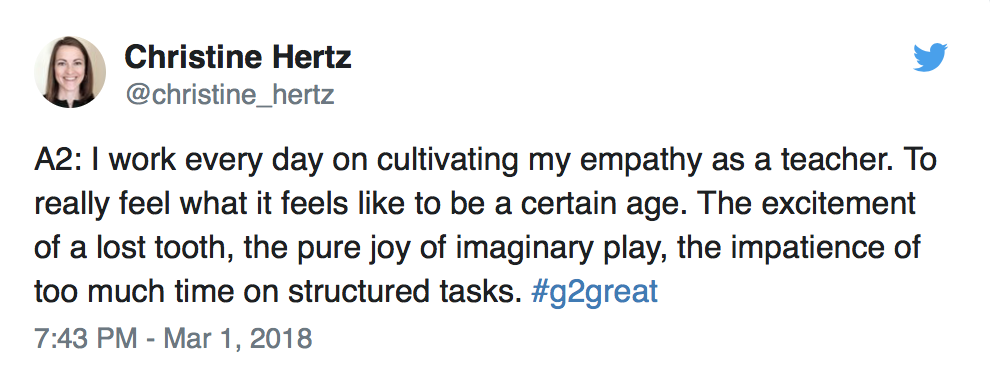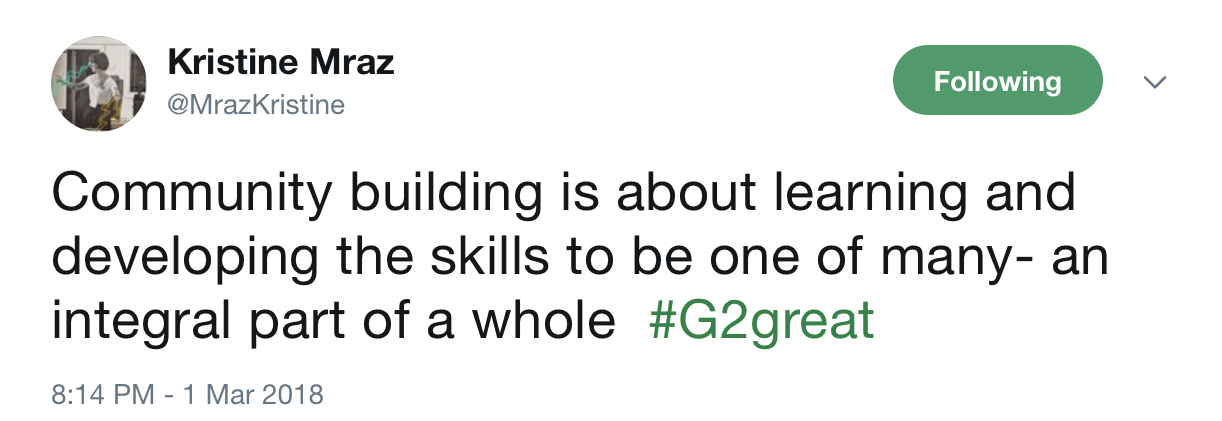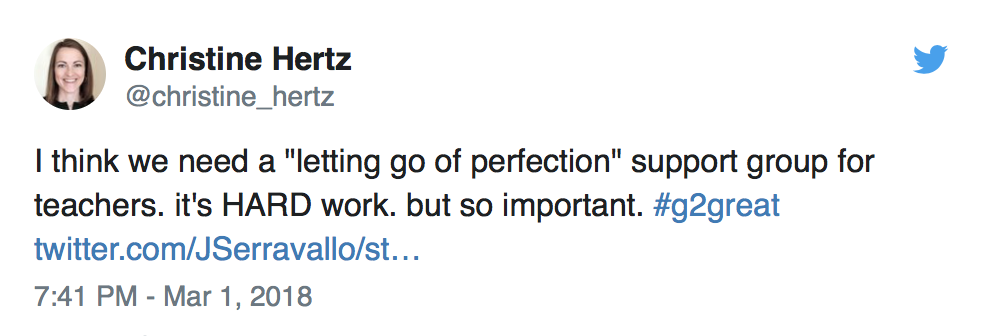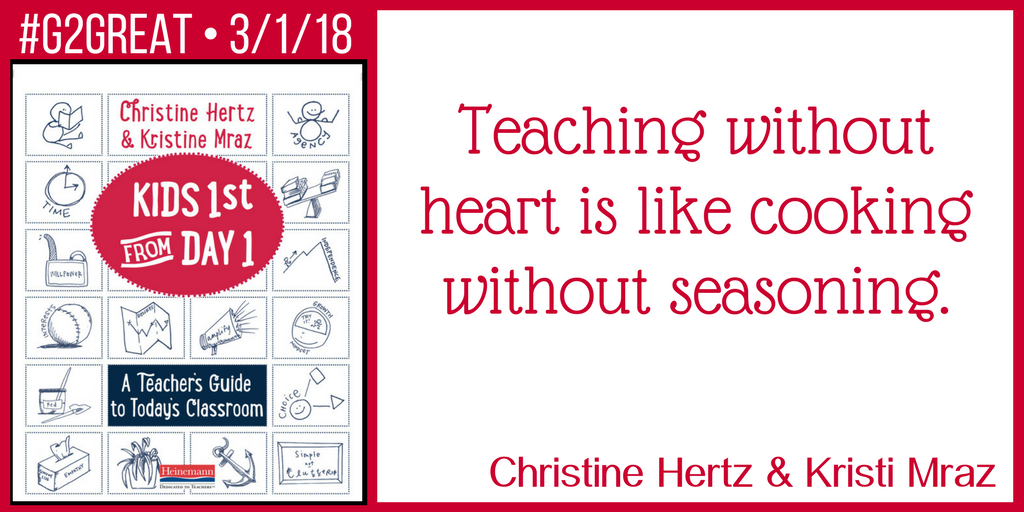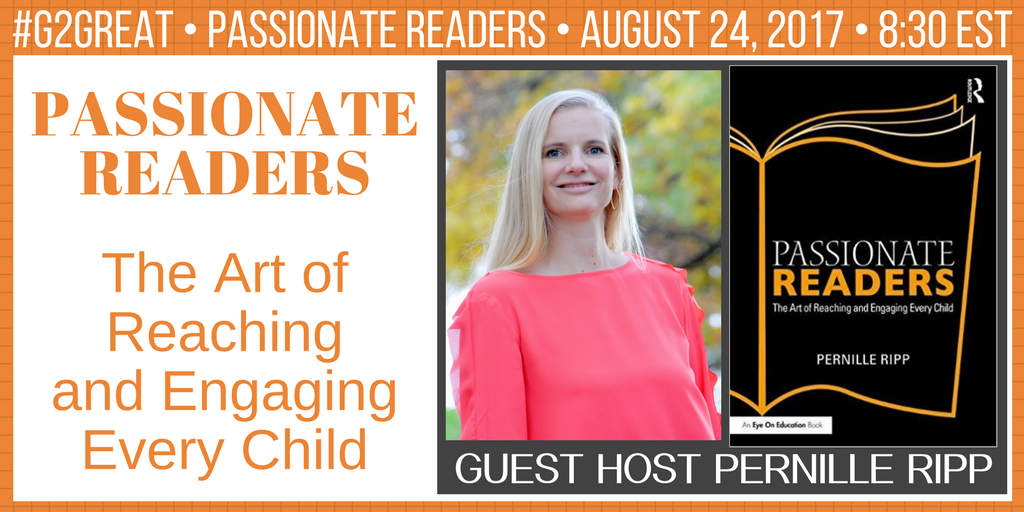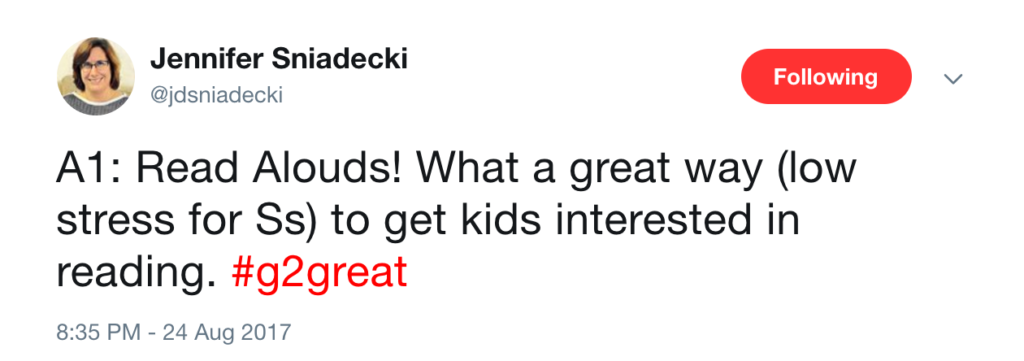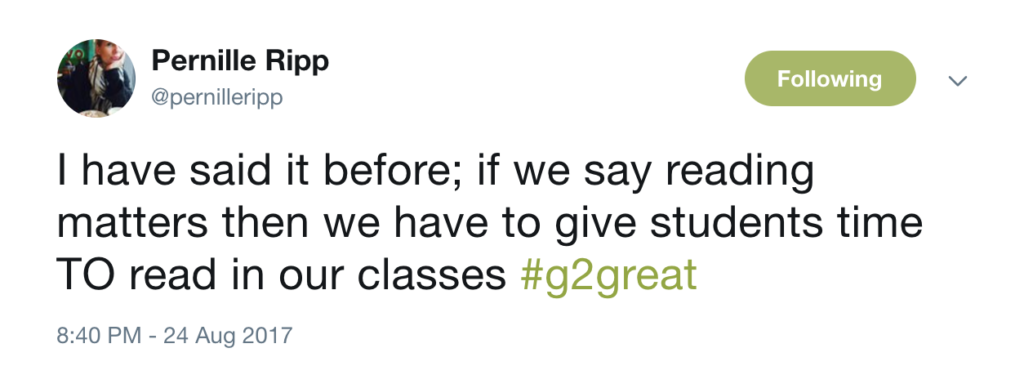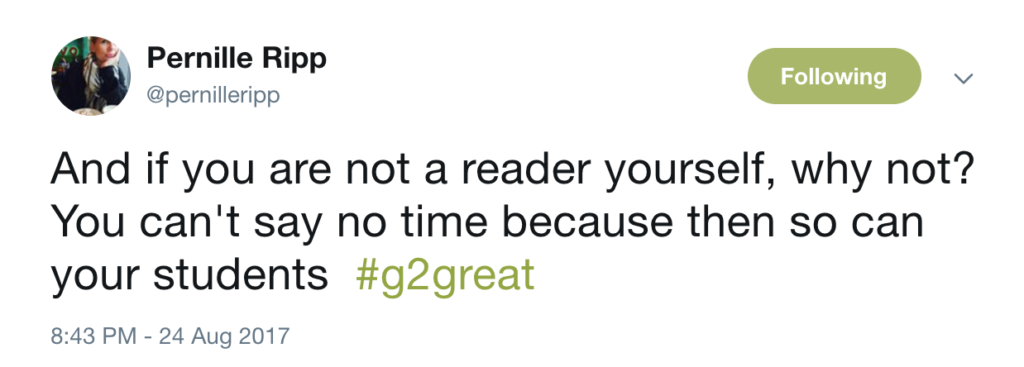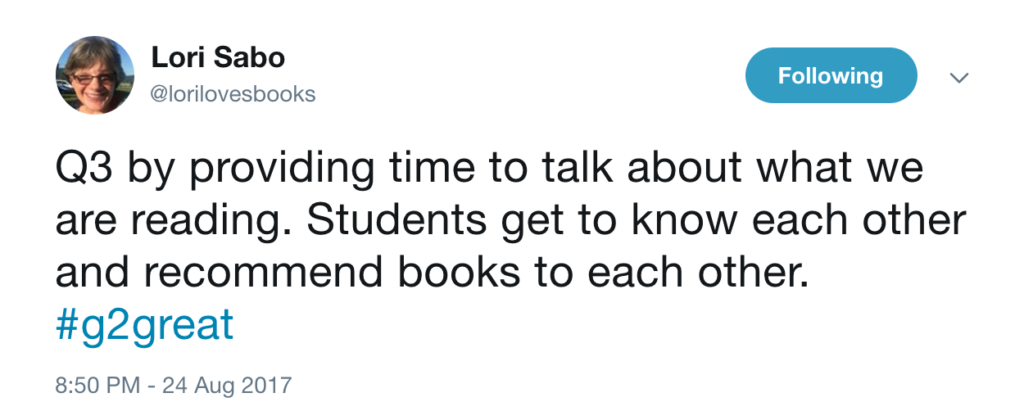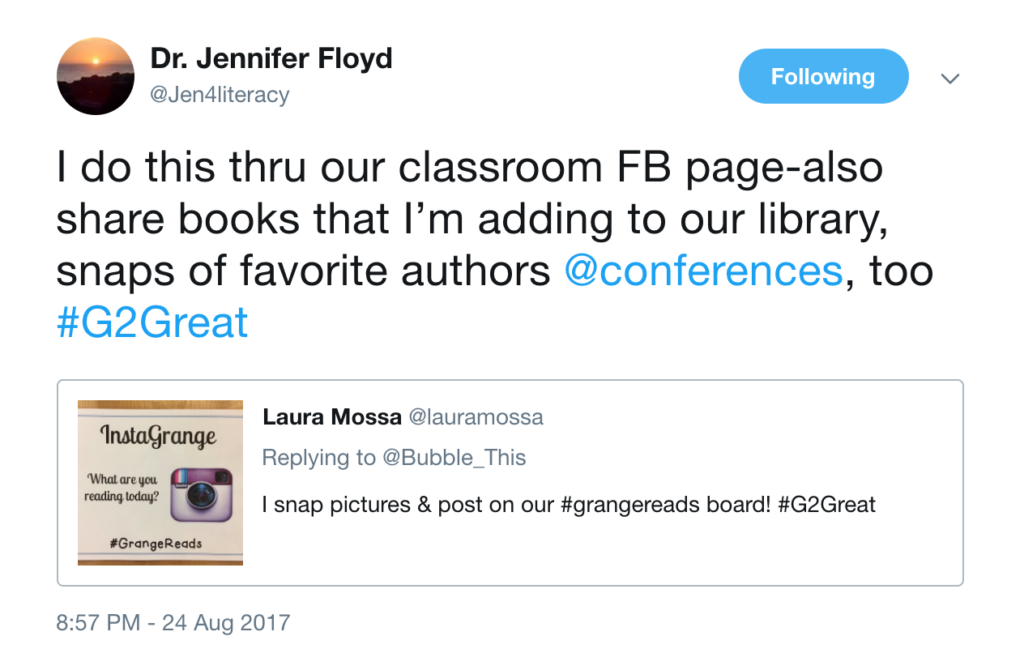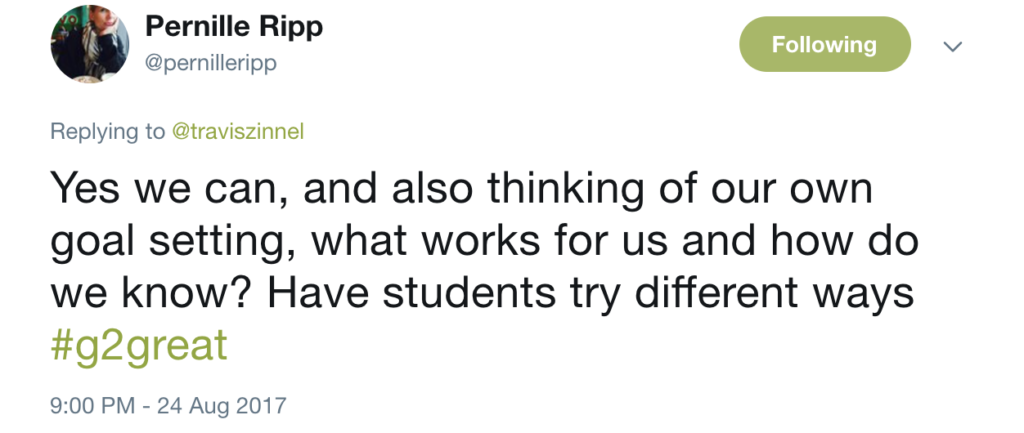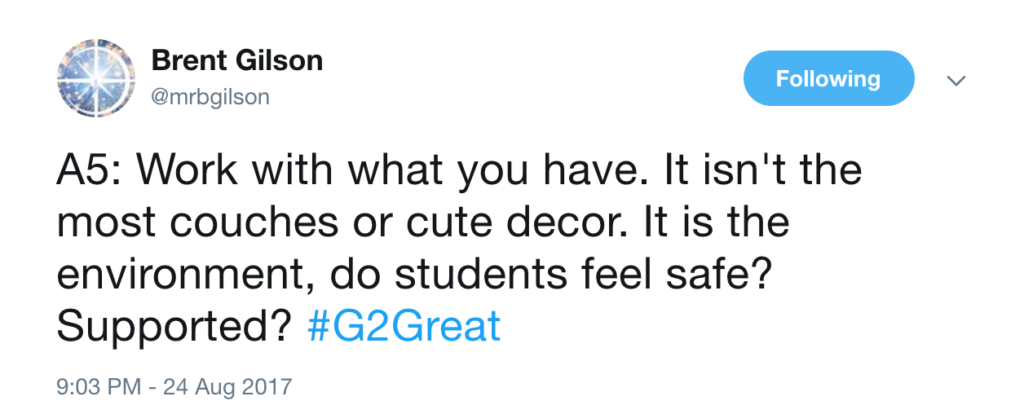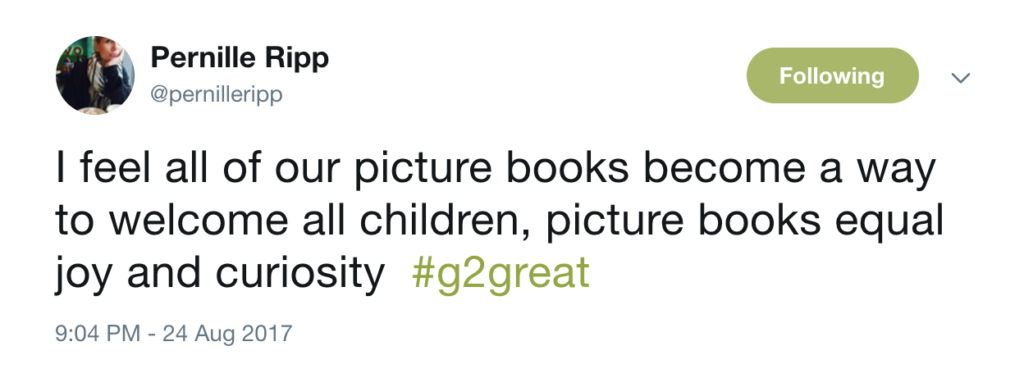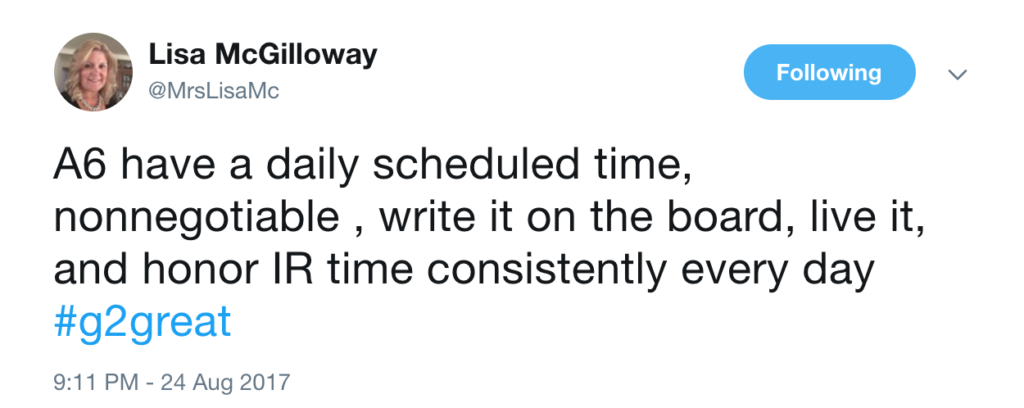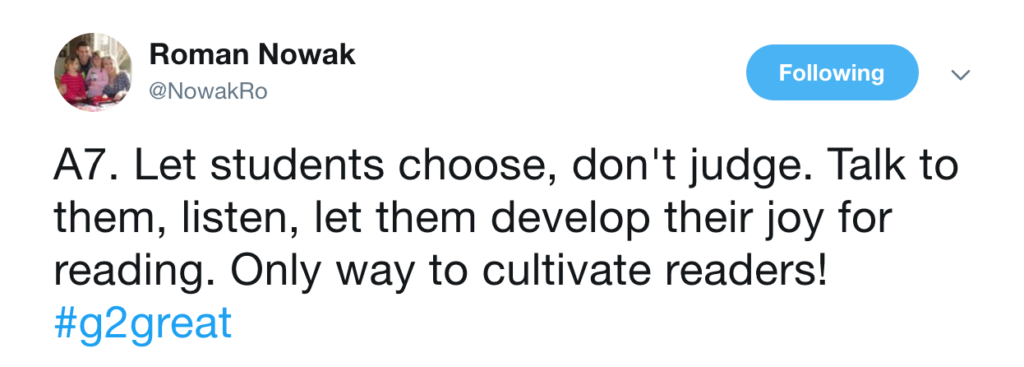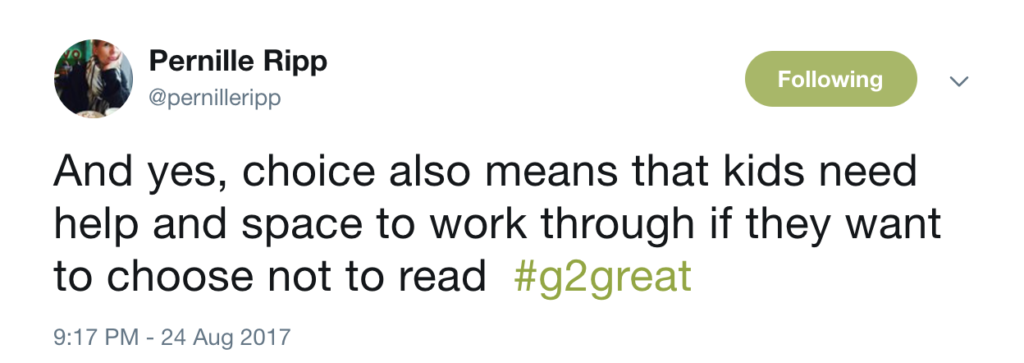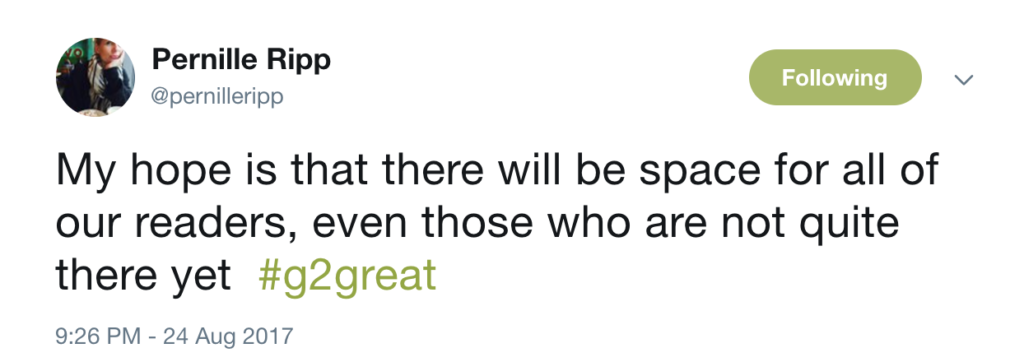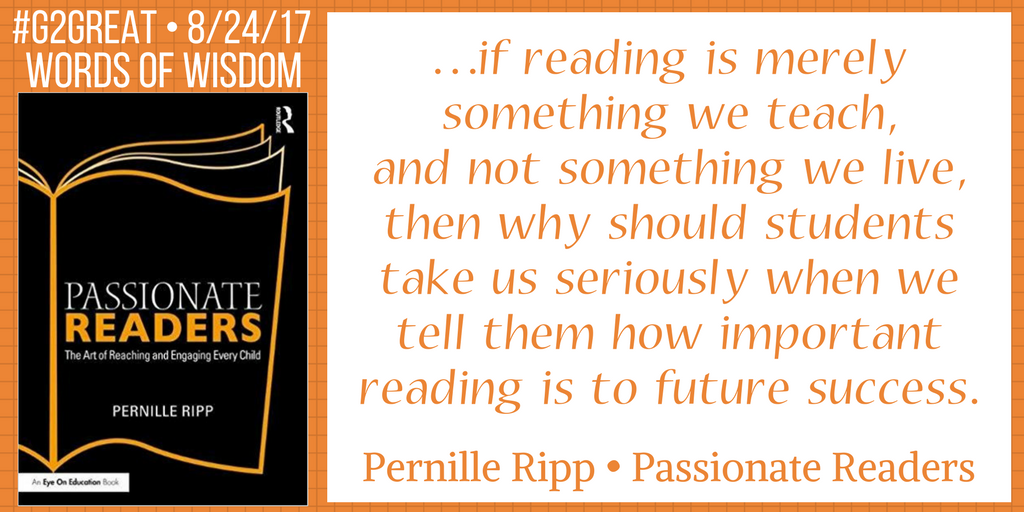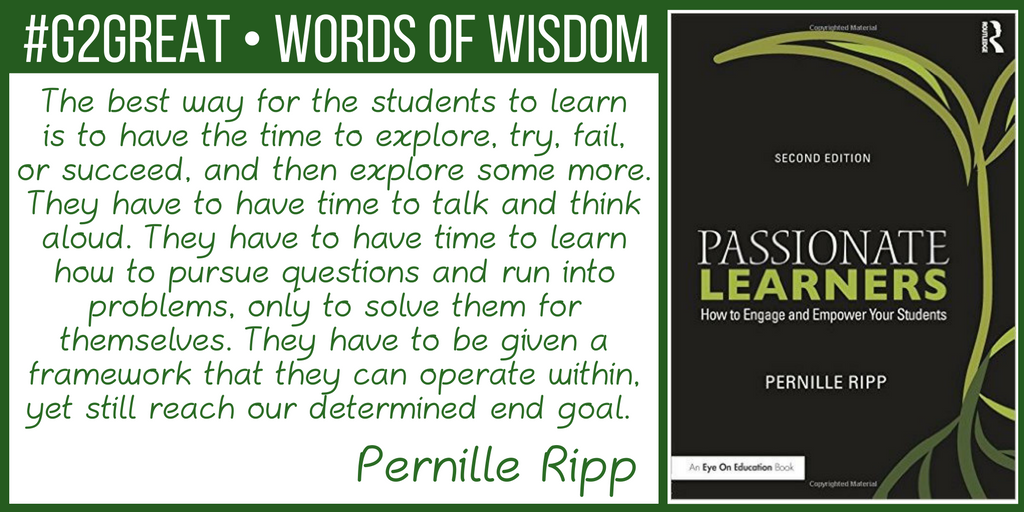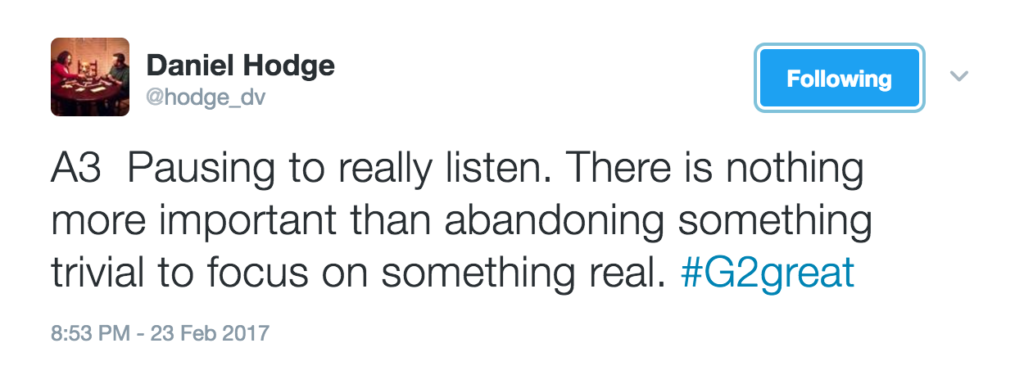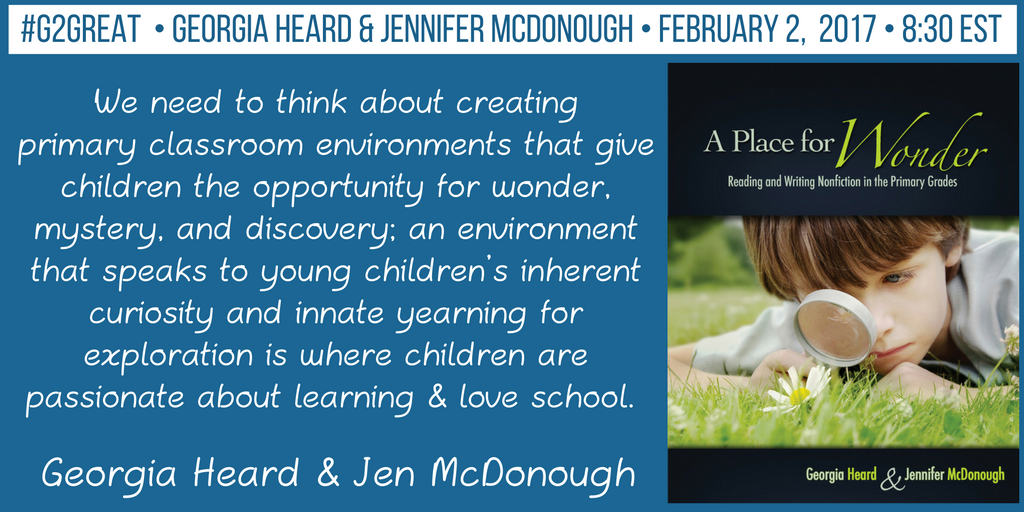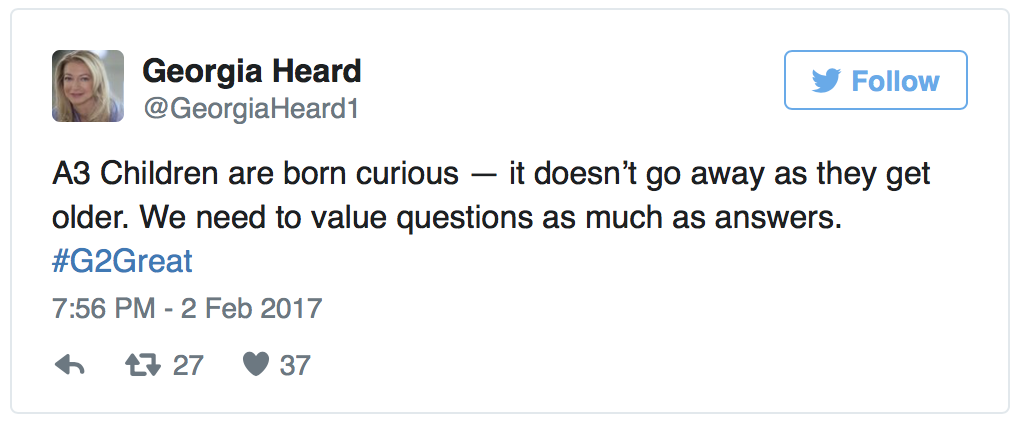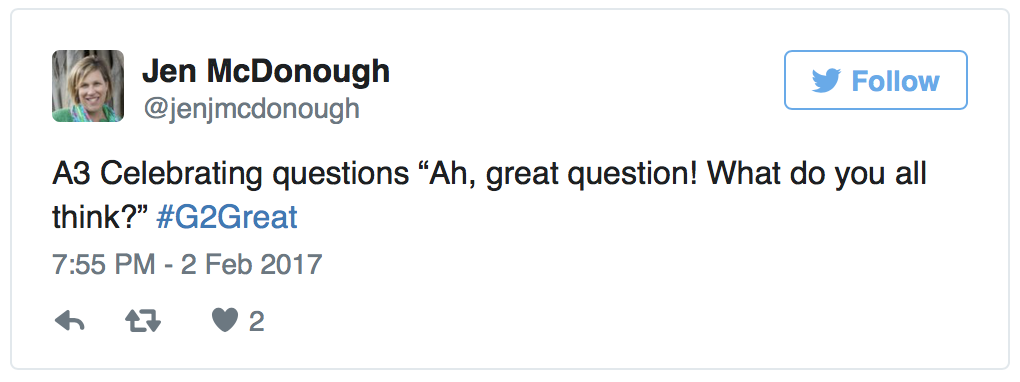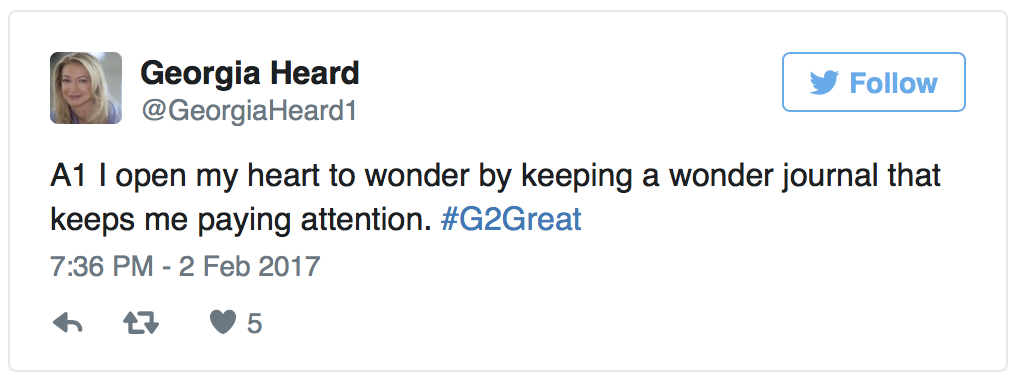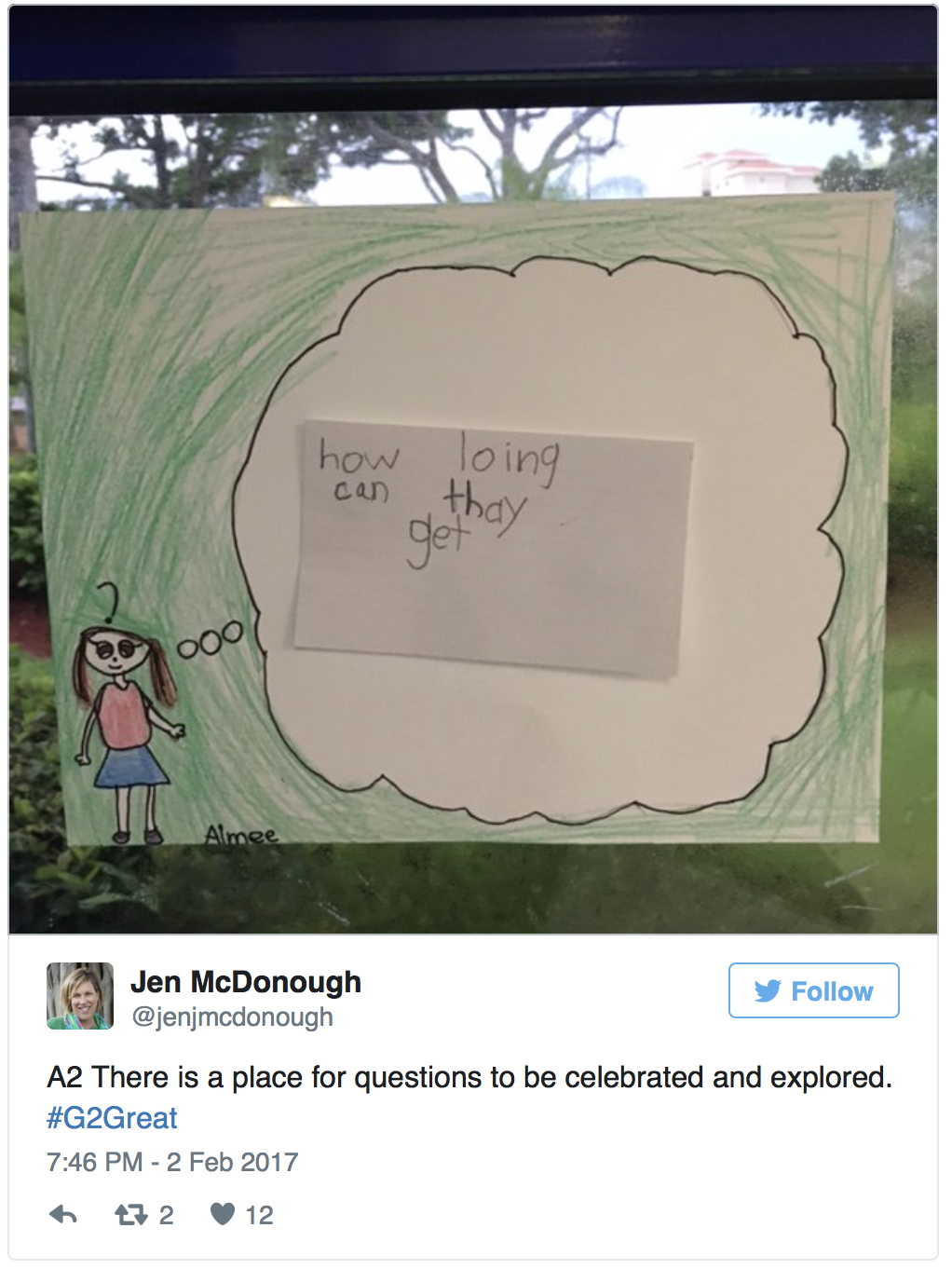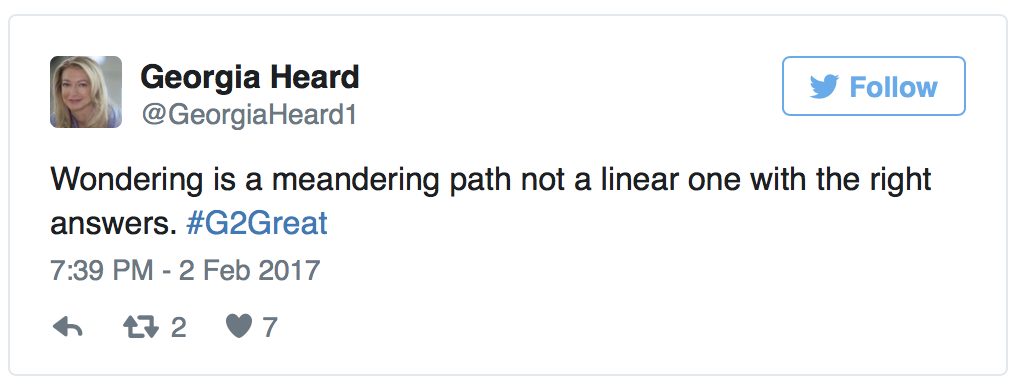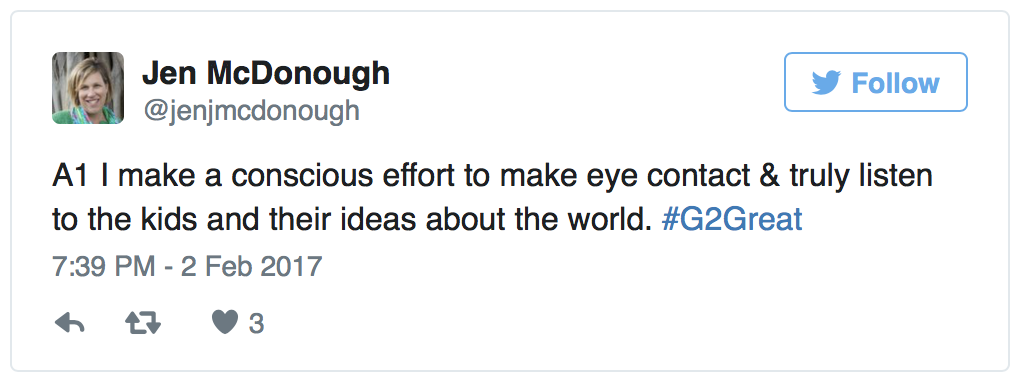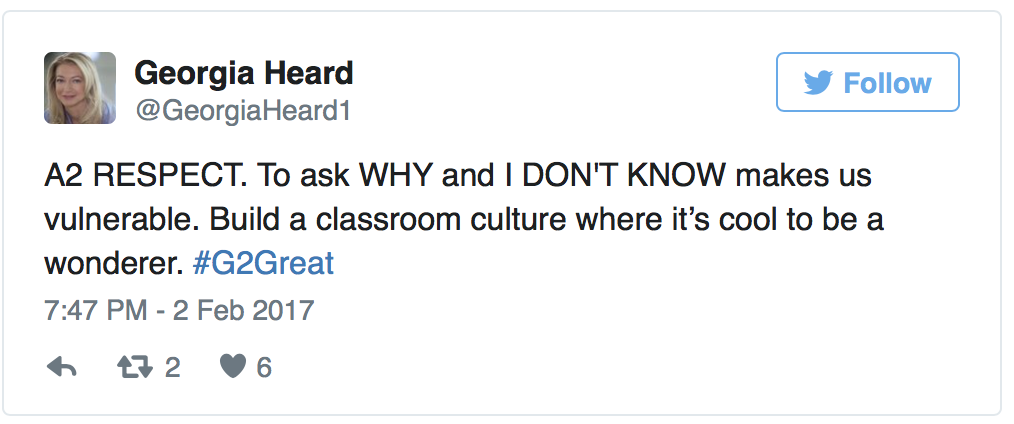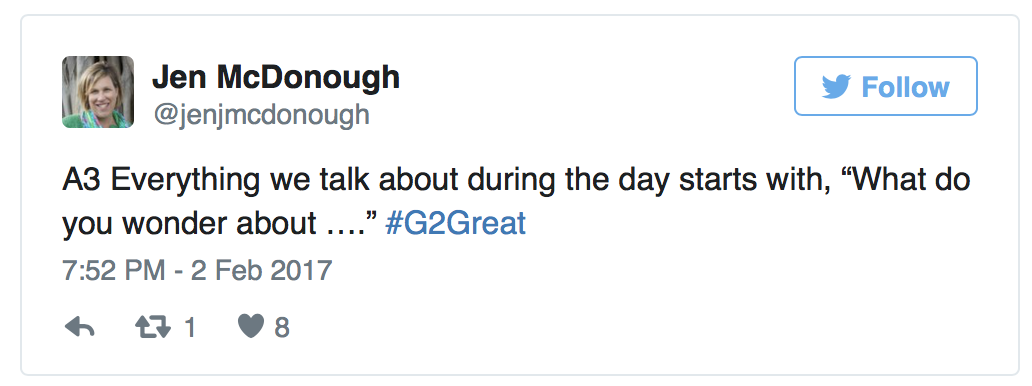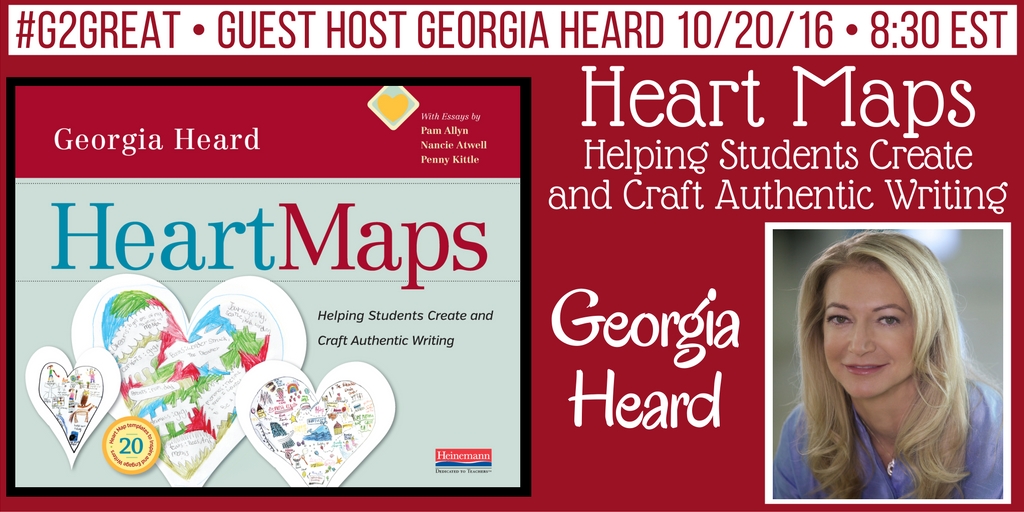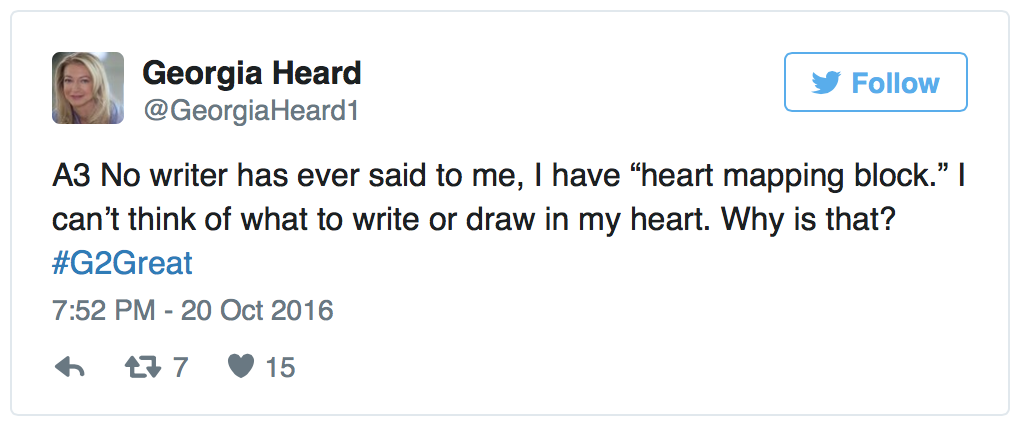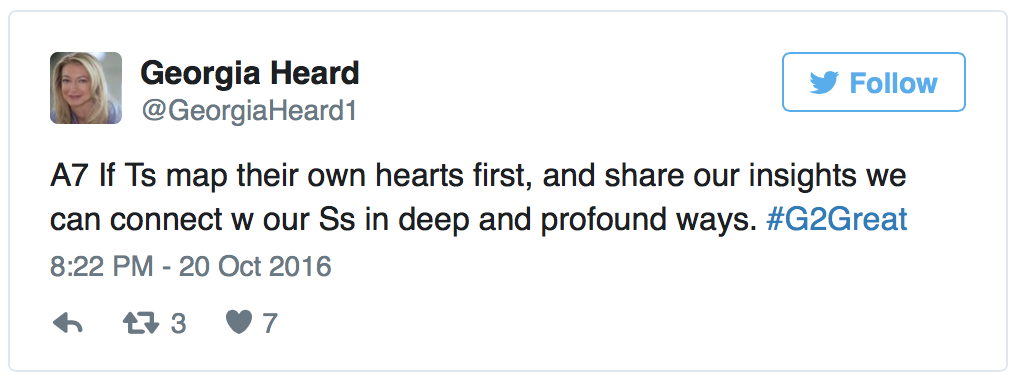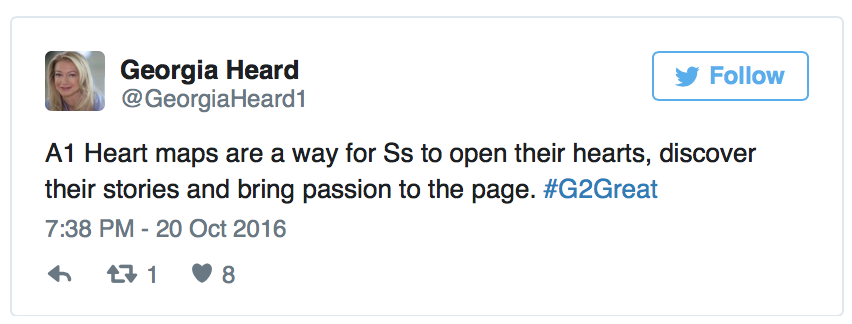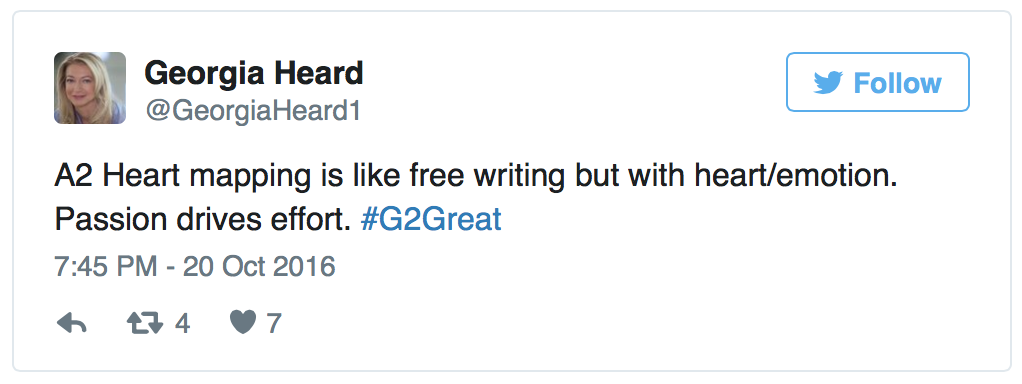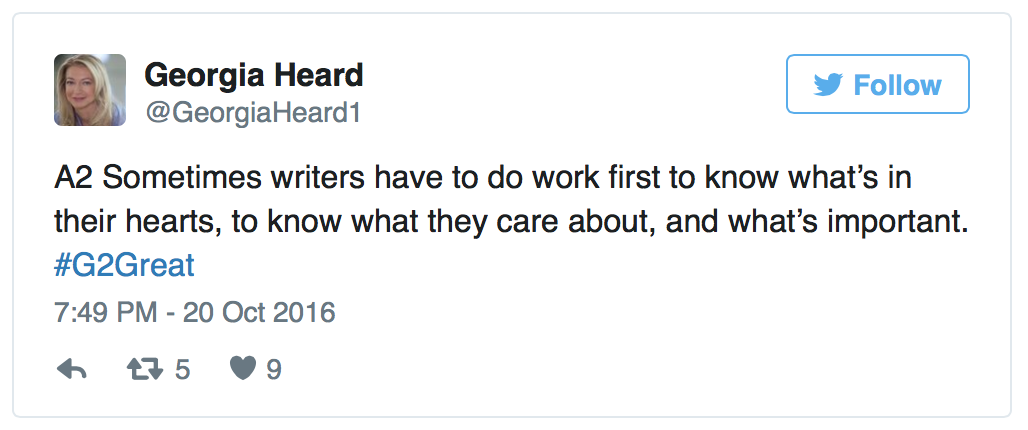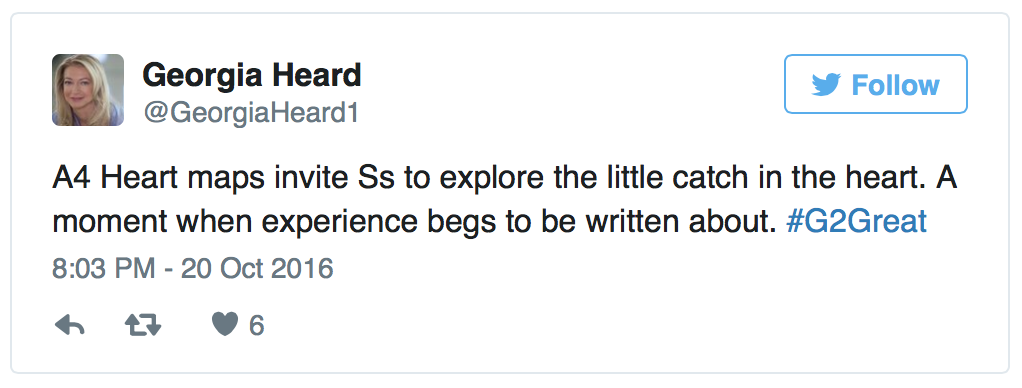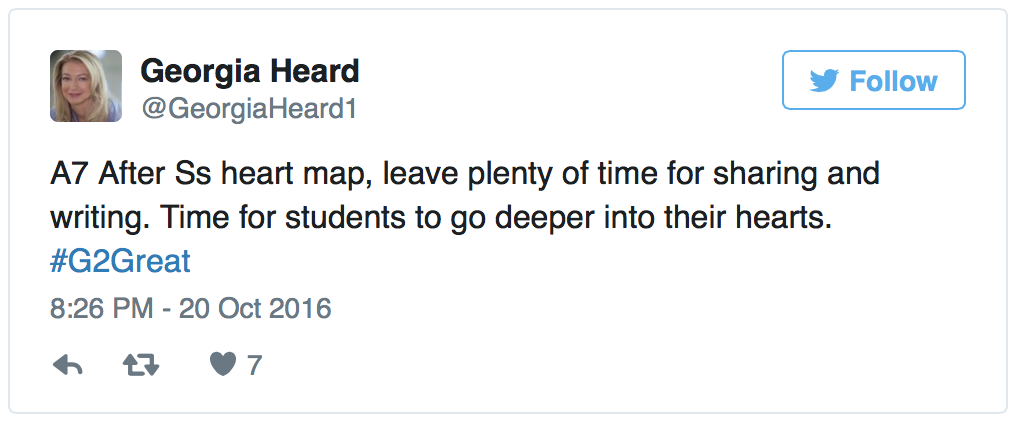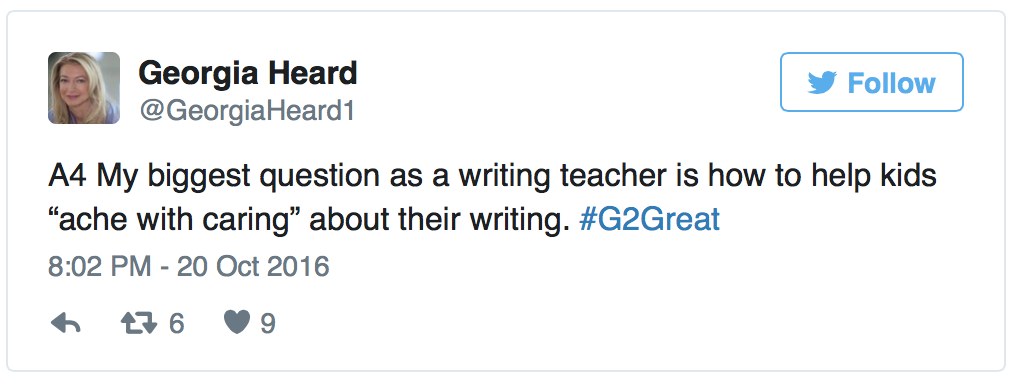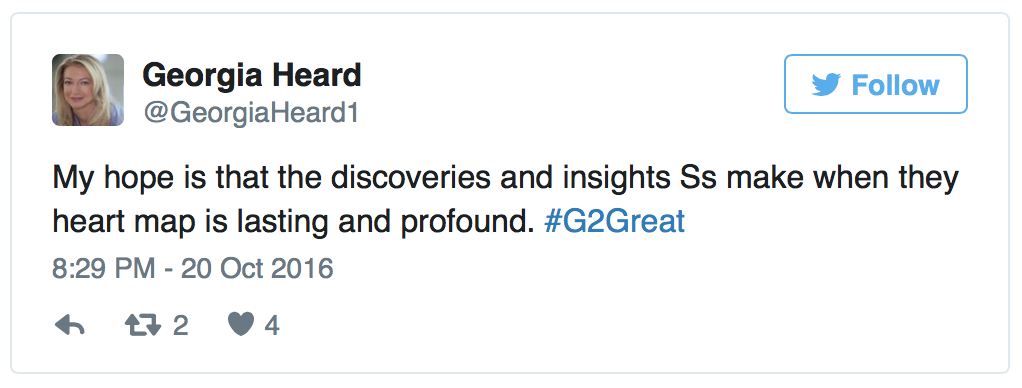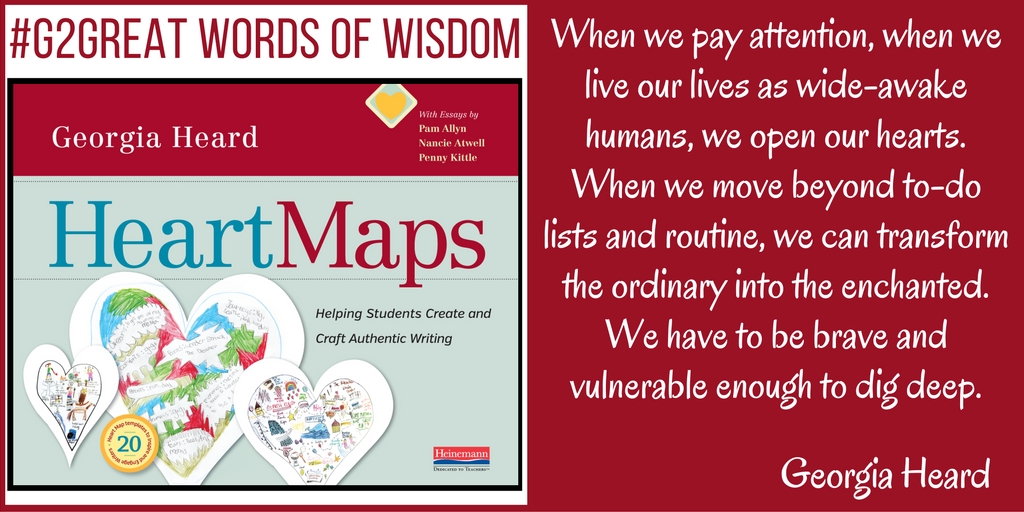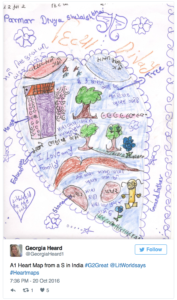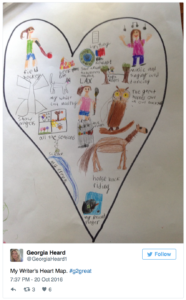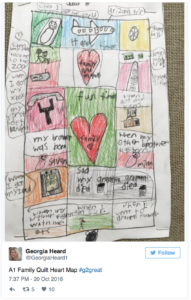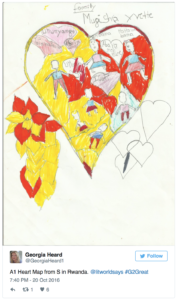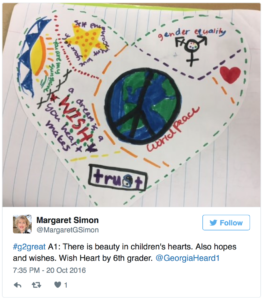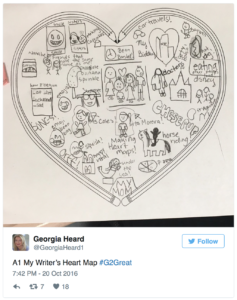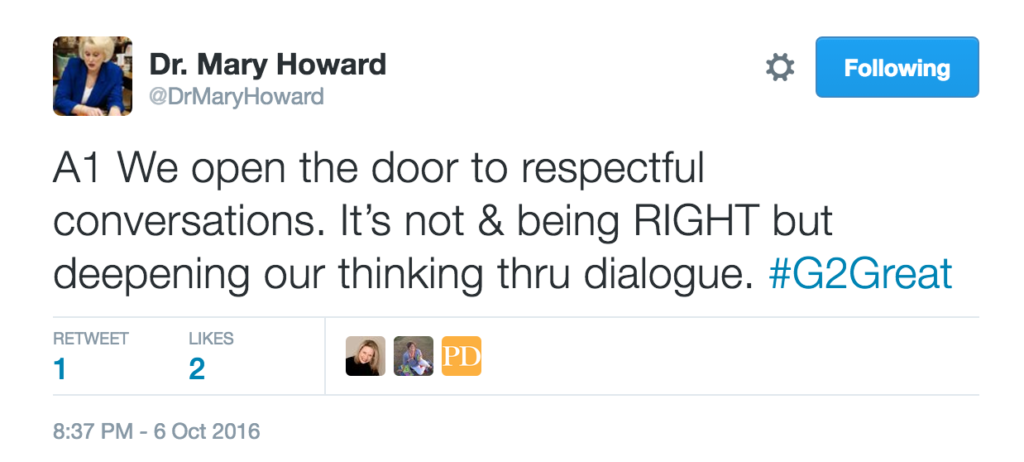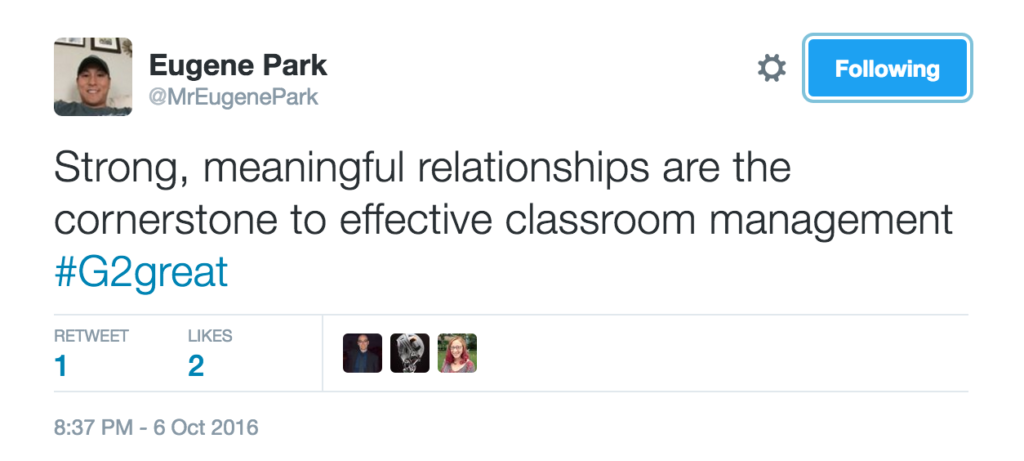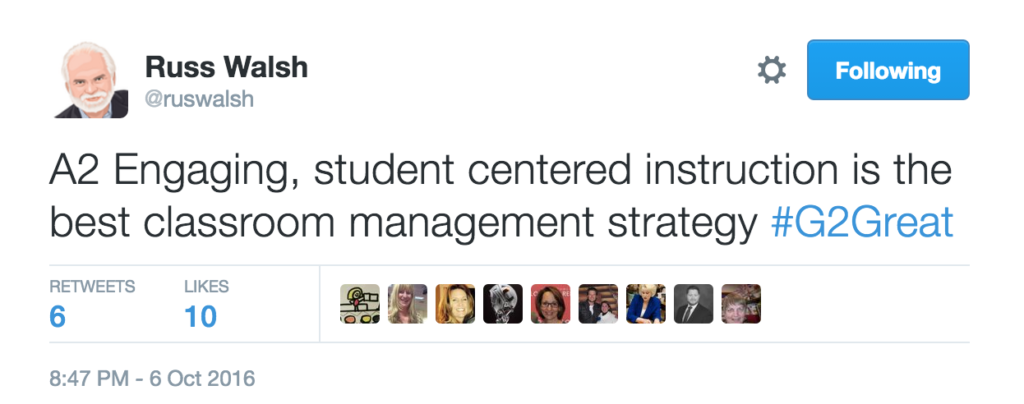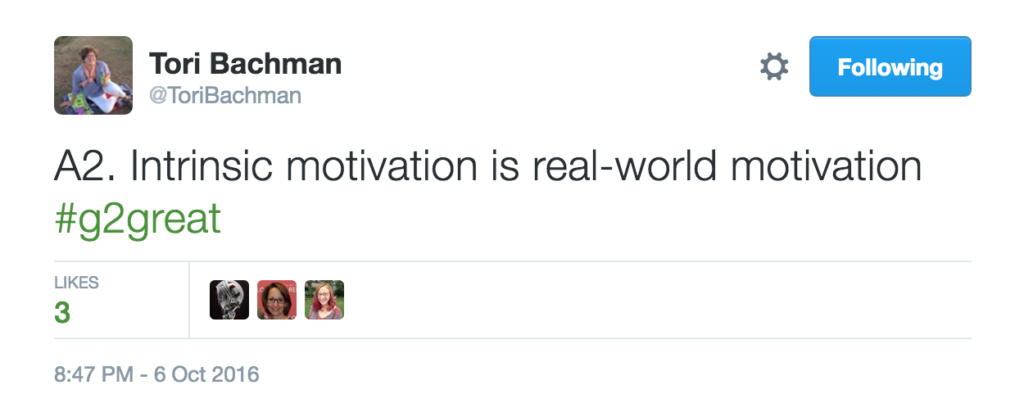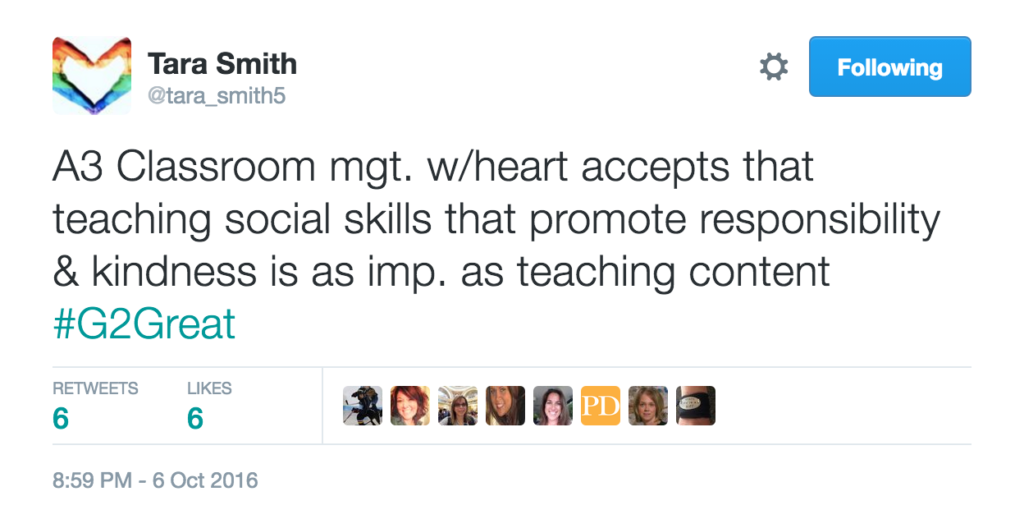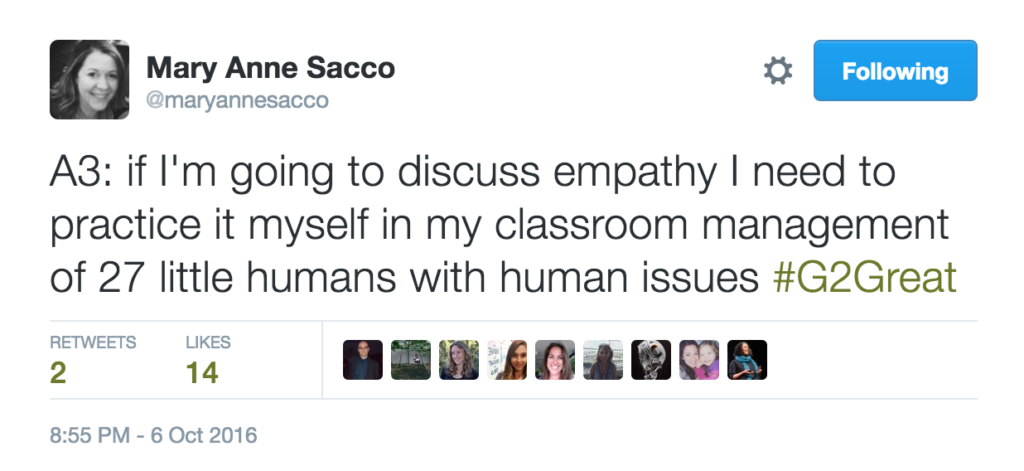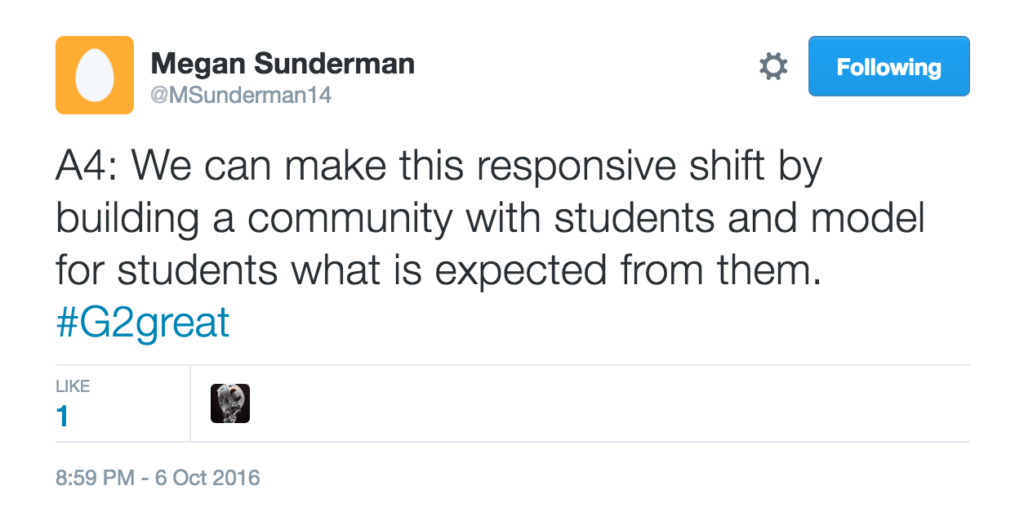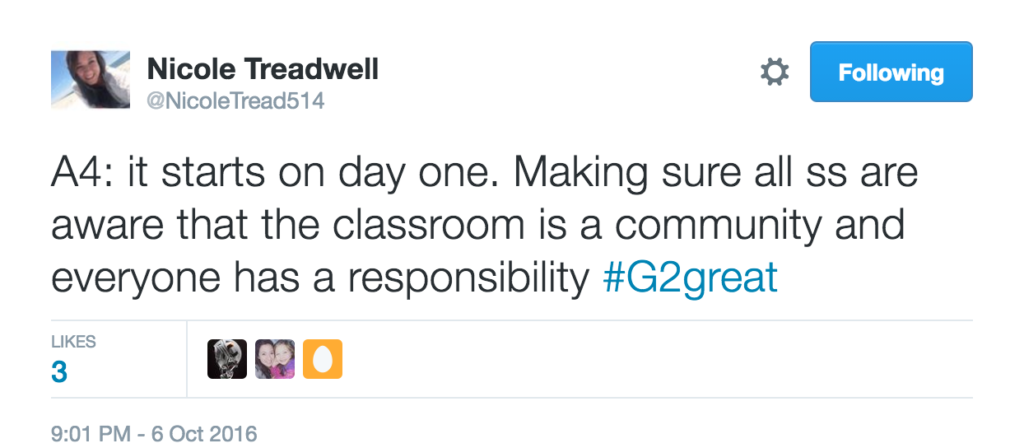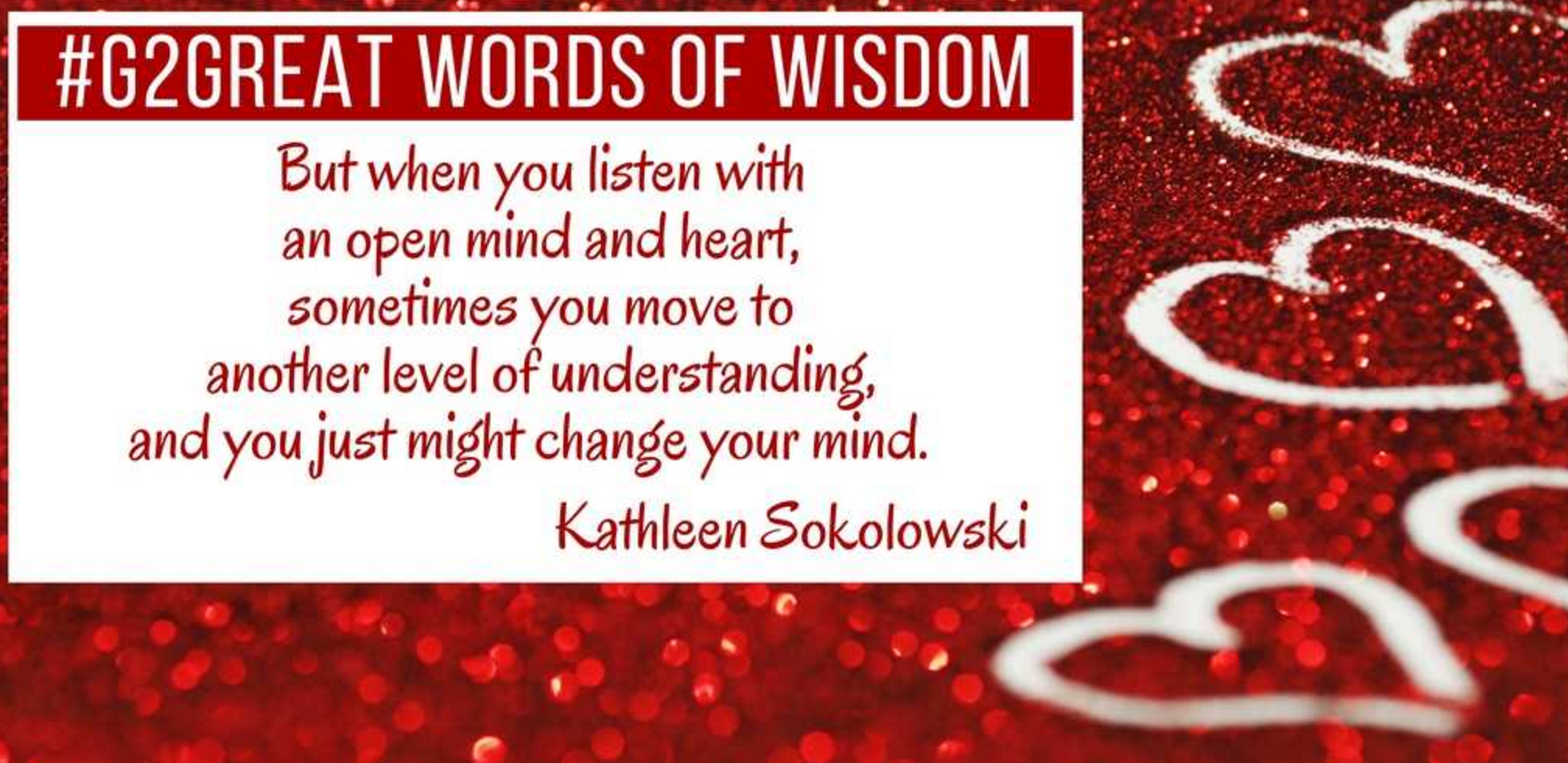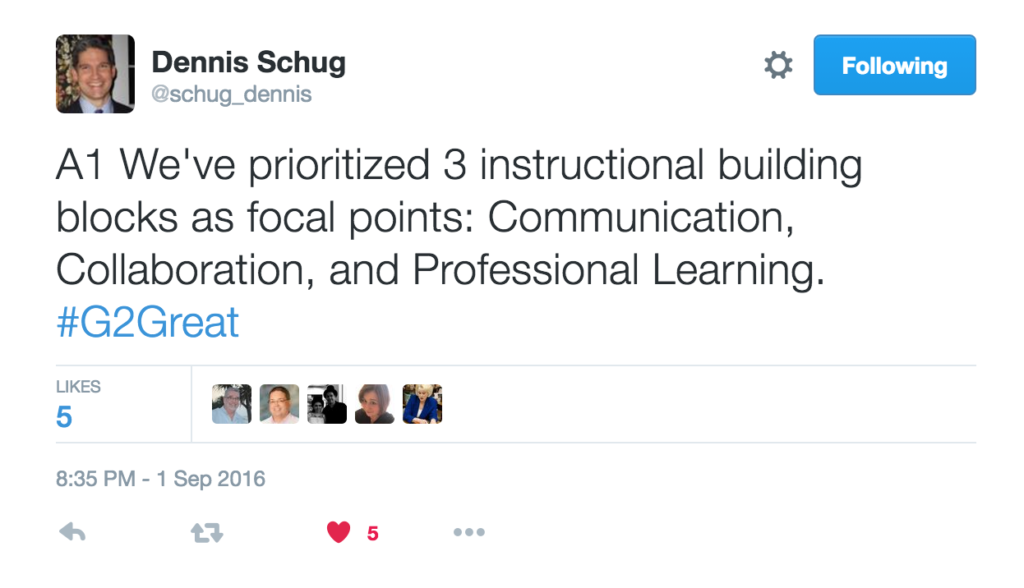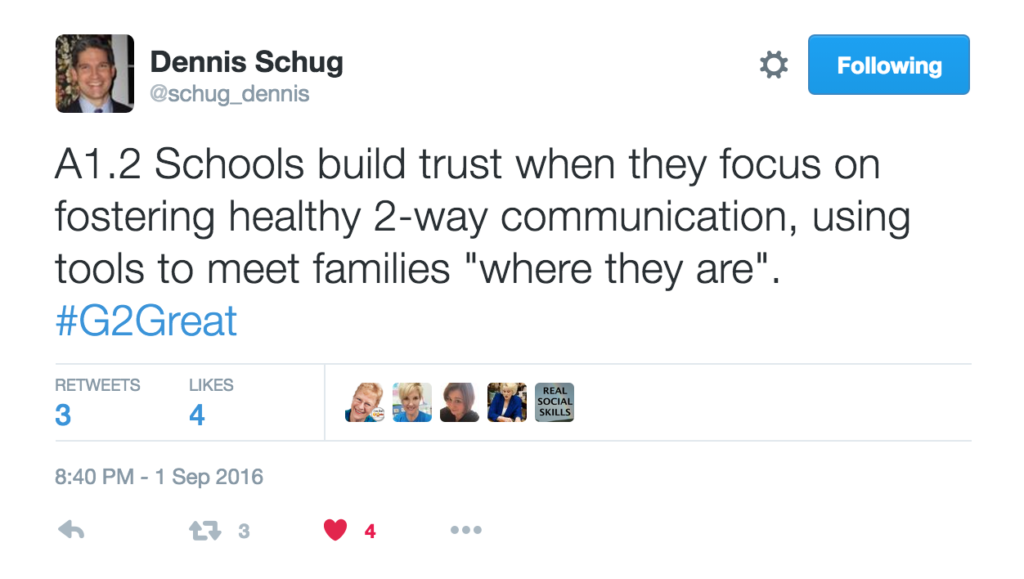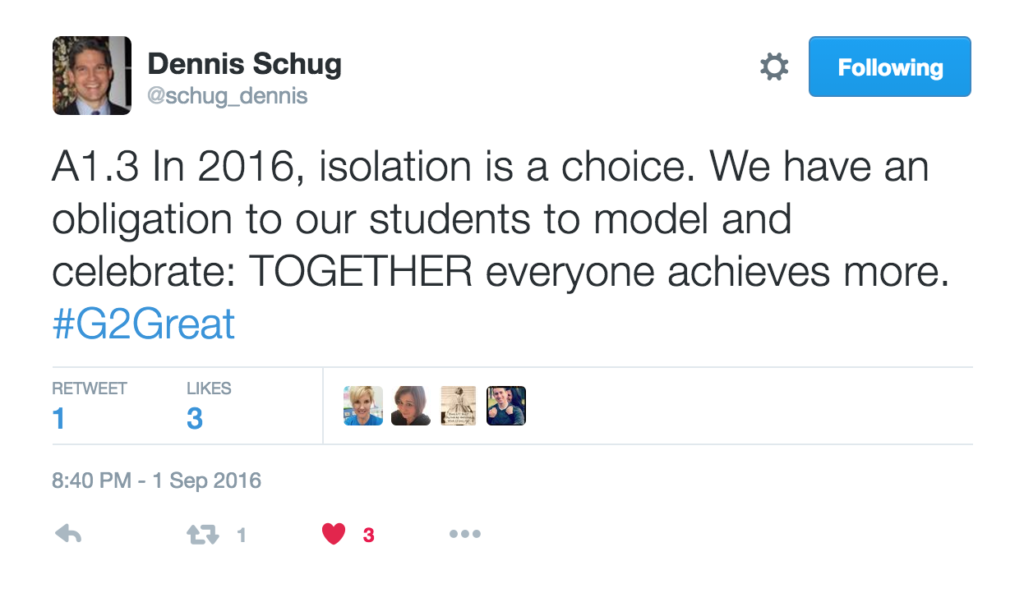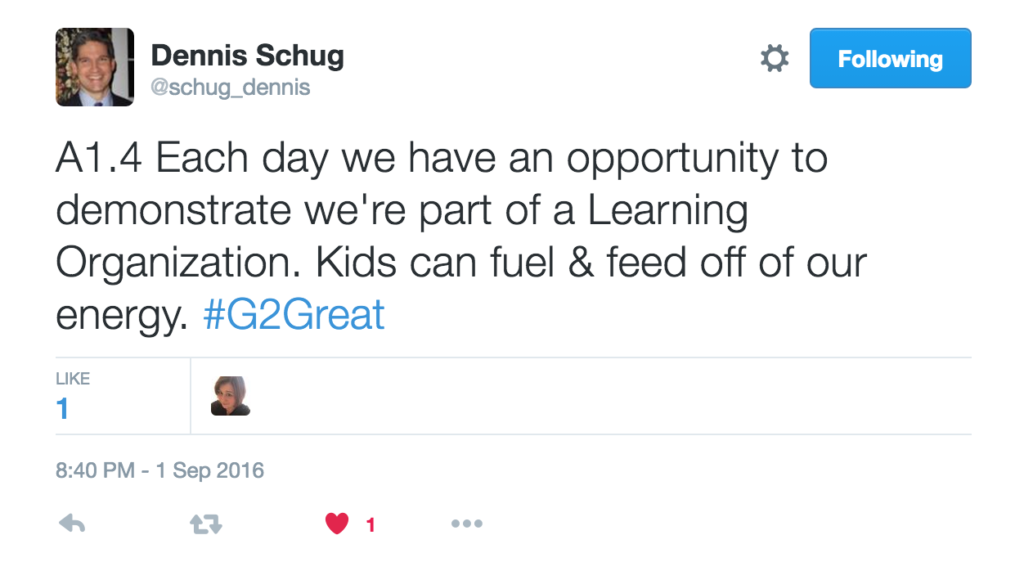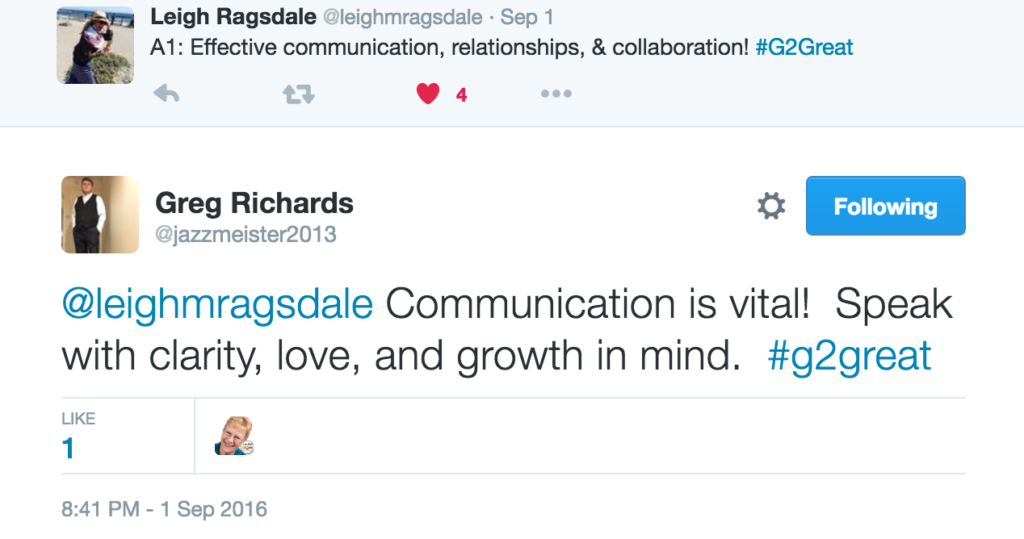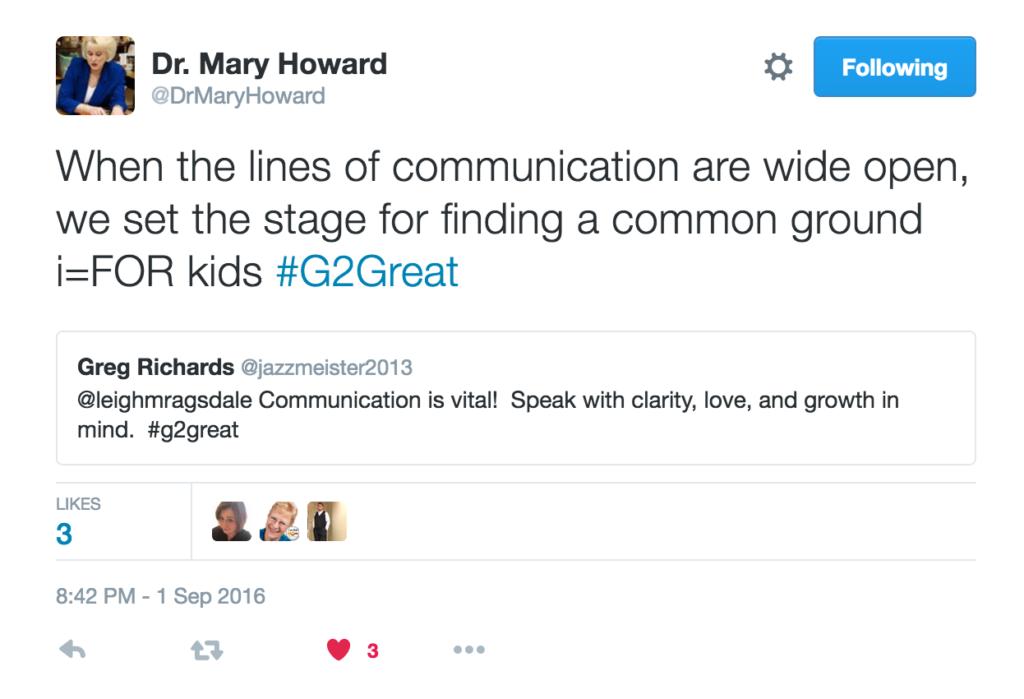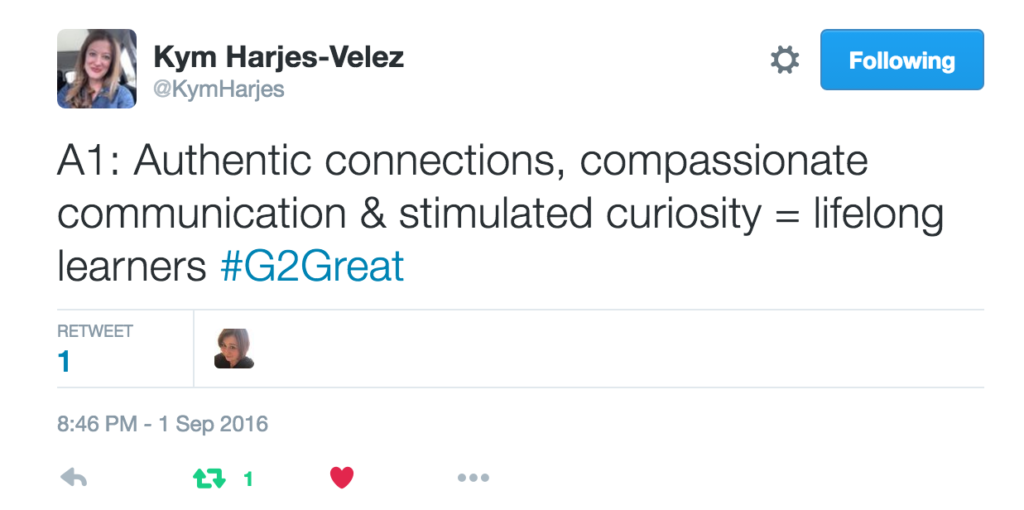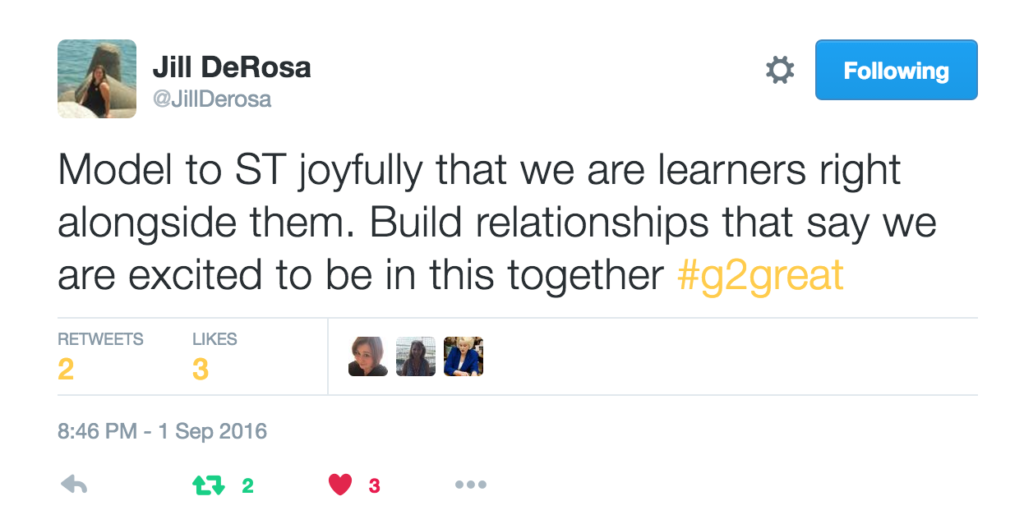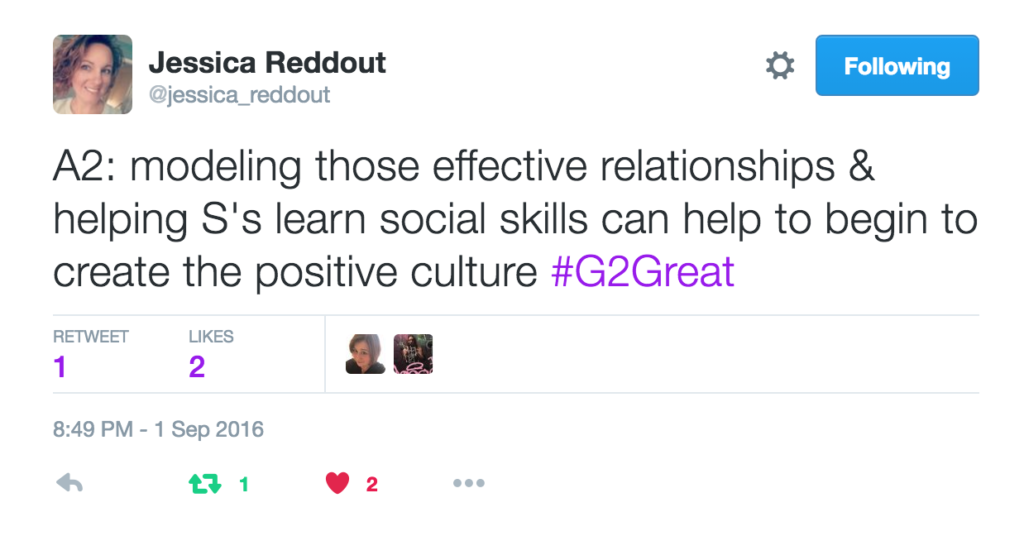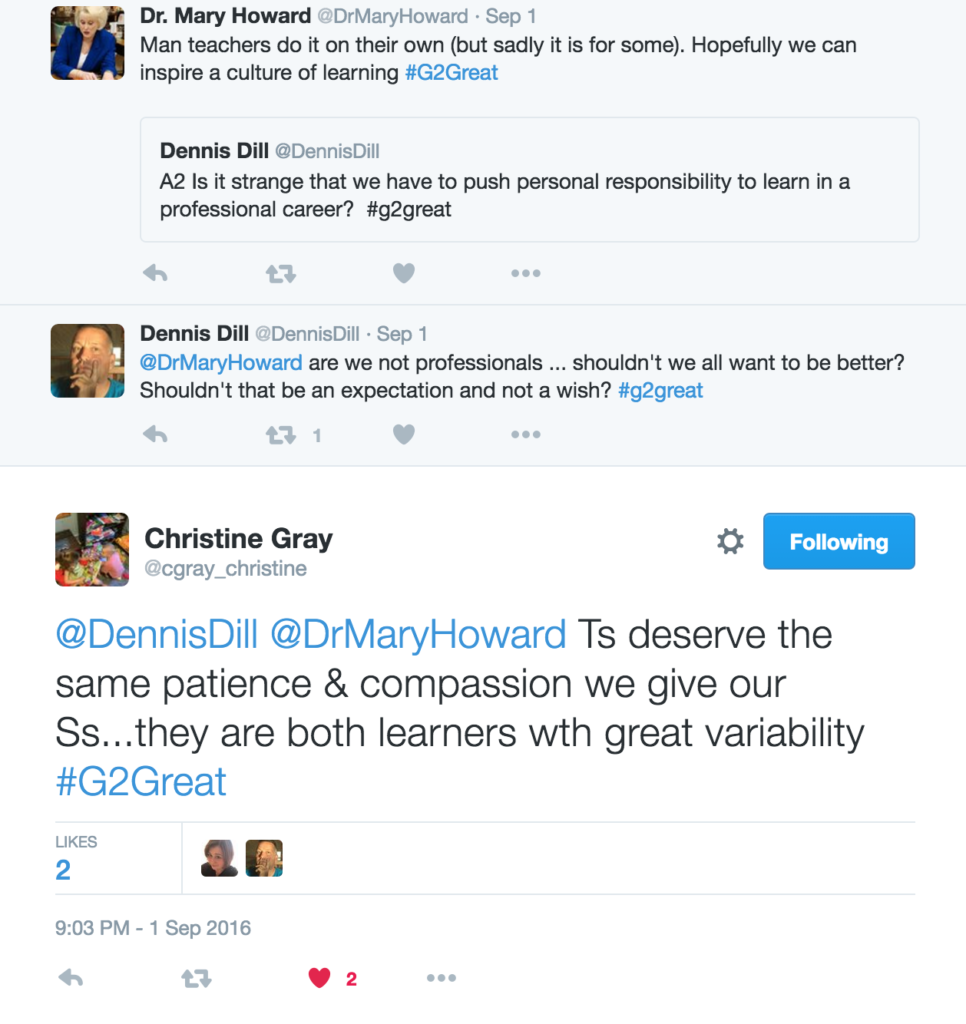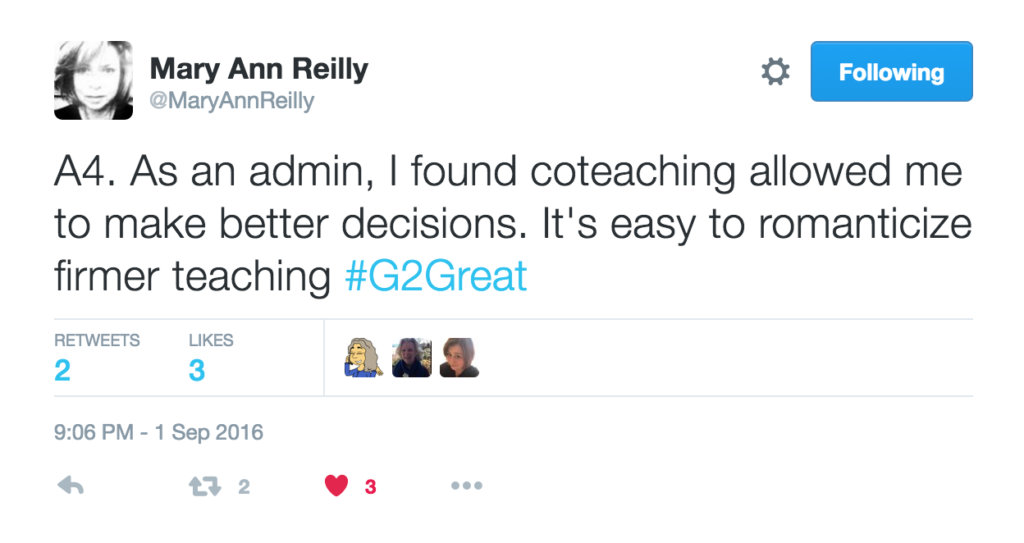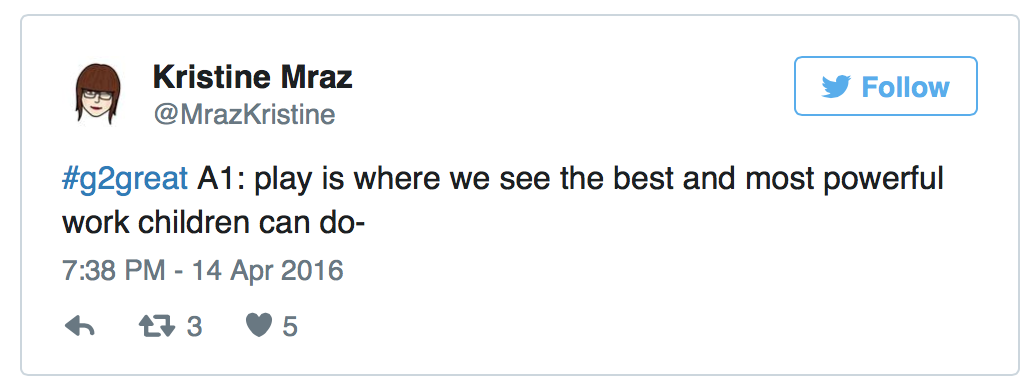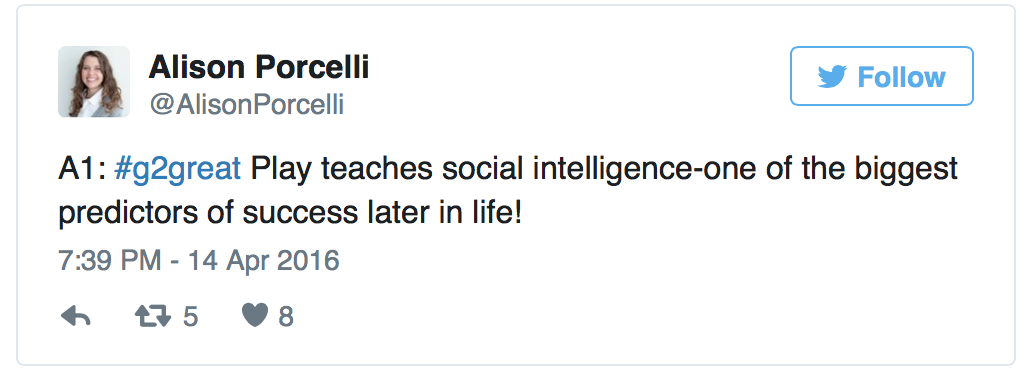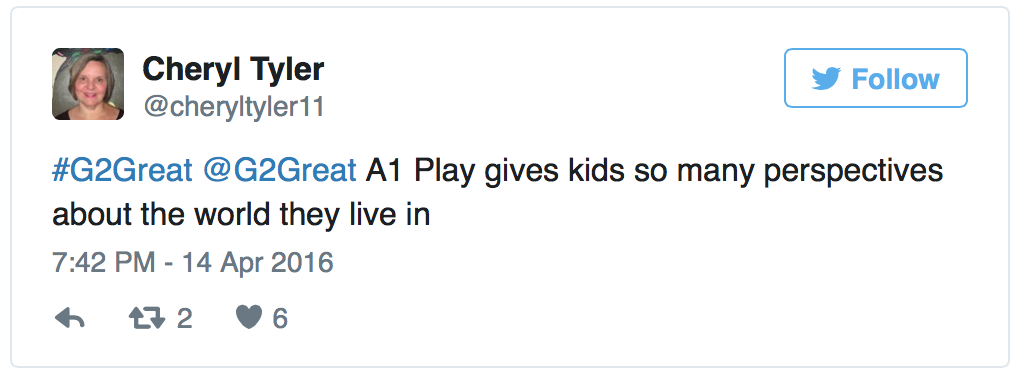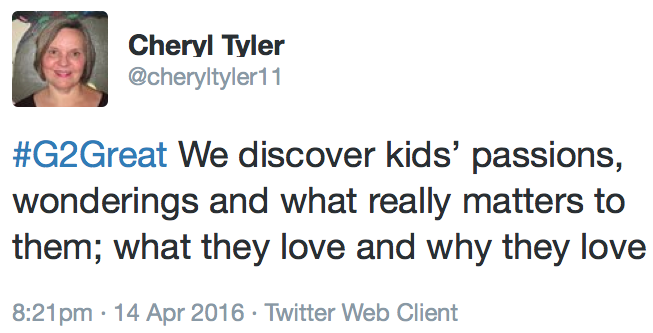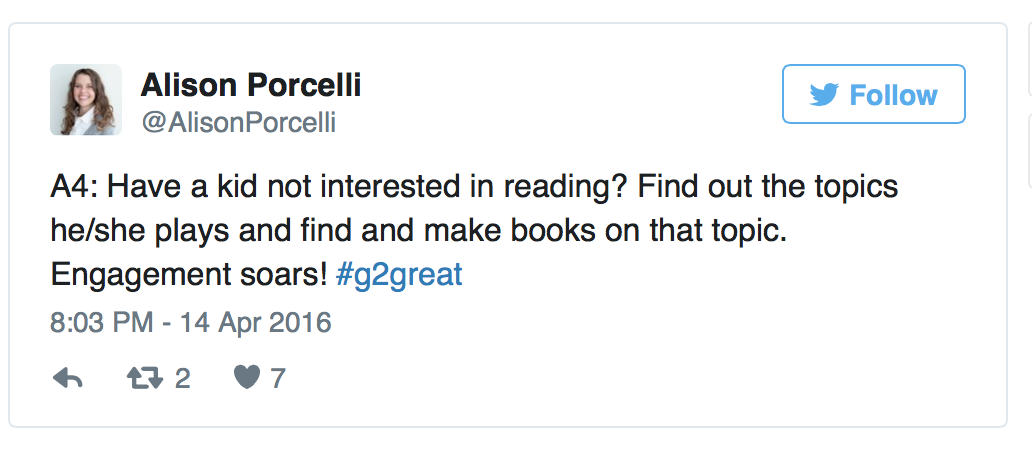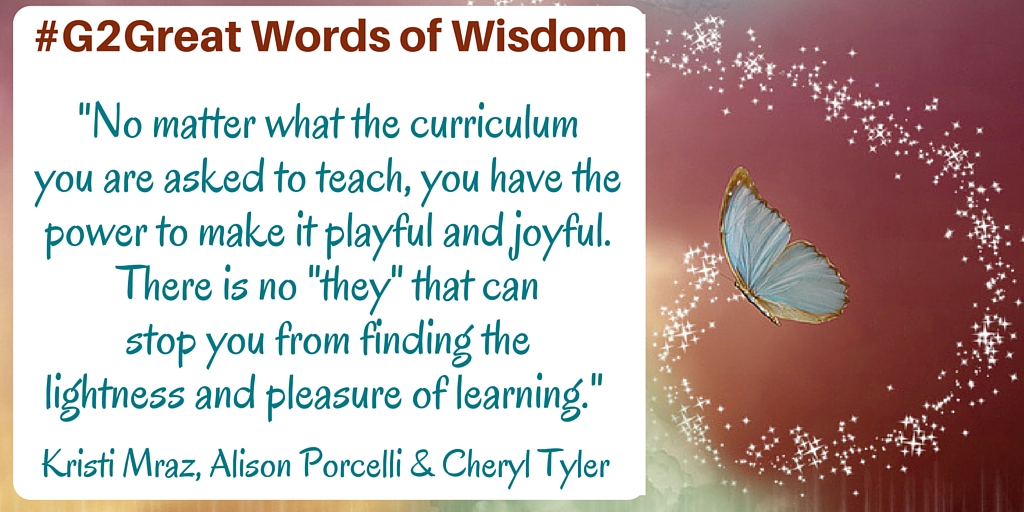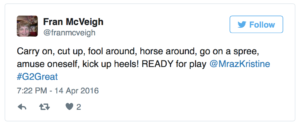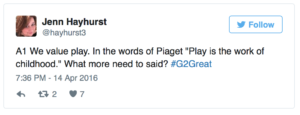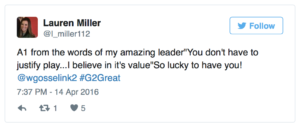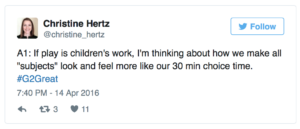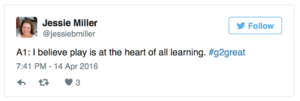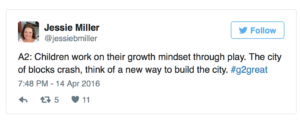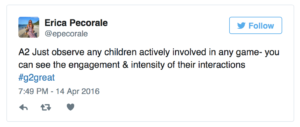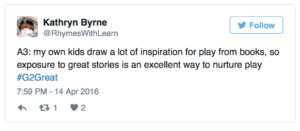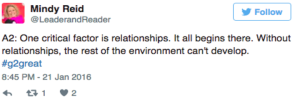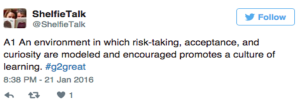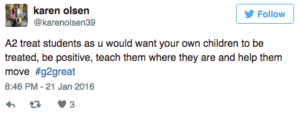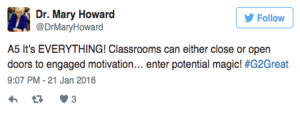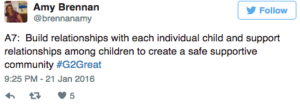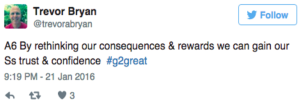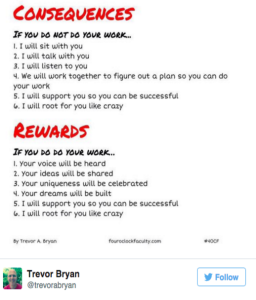by Mary Howard
On March 1, 2018, we were thrilled to welcome dynamic duo, Kristi Mraz and Christine Hertz, back to the #G2Great chat table for the second time (Revisit their Mindsets for Learning chat on 7/21/16 here). On this much anticipated return visit we collectively celebrated their remarkable new book twitter style, Kids 1st from Day 1: A Teacher’s Guide to Today’s Classroom (Heinemann, 2018).
Within minutes after opening this phenomenal book, I realized that I was holding PROFESSIONAL LOVE in my hands. Before I could even finish the introduction, Kristi and Christine beckoned me with words that illuminated their “Kids 1st” vision in an opening quote:
“As we taught we realized that so much (too much) of the profession is focused on the ways teachers can make students successful, but not how we give children the tools to build their own success day after day after day.” (xii)
Just like that, I was utterly smitten and eager to accept their invitation to come along as they shared what they learned when they “sat with their failures and rose to teach again.” Their deep belief in joyful kid-centered learning rose from every page of this magical book that empowers us to sit with our own failures knowing that they hold so many potential successes. I smiled as I turned to the last page, filled with a renewed sense of hope for this profession. I paused to soak in the blessing of gazing into the eyes of their children where the real opportunities have always resided.
This beautiful book is divided into four main sections: Heart Work, Physical and Emotional Environment, and Curriculum. Admittedly, I found myself returning to the Heart Work section to reread descriptions of flourishing, empathetic, playful, flexible, and reflective educators. Each of these rich professional qualities were also thoughtfully infused across each chapter.
As our #G2great chat with Kristi and Christine began, my unquenchable thirst to enter the Kid’s 1st world they describe was my chat GPS. I eagerly searched for tweets that would add to my understandings – and I was not disappointed. My biggest challenge wasn’t finding interrelated tidbits of twitter wisdom but how to narrow those connections down for the purpose of this post. As I began to weave their chat wisdom with their book wisdom, ten big ideas emerged that beautifully illustrate the Kids 1st view described in their book. To combine both, my reflections on their chat messages are interwoven with their book message in italics. While these cannot possibly substitute for a deep read of Kids 1st From Day 1, they complement a shift from making students successful to giving children the tools to build their own success day after day after day.
Kids 1st Big Idea #1: Our Commitment to Children
Kristi acknowledges that mandates have the potential to thwart our efforts to create a Kids 1st classroom while asking us to remain steadfast in our responsibility to children. In other words, we cannot allow compliance to deter us since success is possible when the factors are right. I love Kristi’s use of the word ‘power’ since I see this as a two-pronged factor in that we are taking back our own power so that we can hand that power over to children. Making room for student choice regardless of outside demands reflects that our commitment to children will always rise above our obligation to those “other” things, real or perceived. We should never feel compelled to make a choice between compliance to mandates over responsibility to kids. 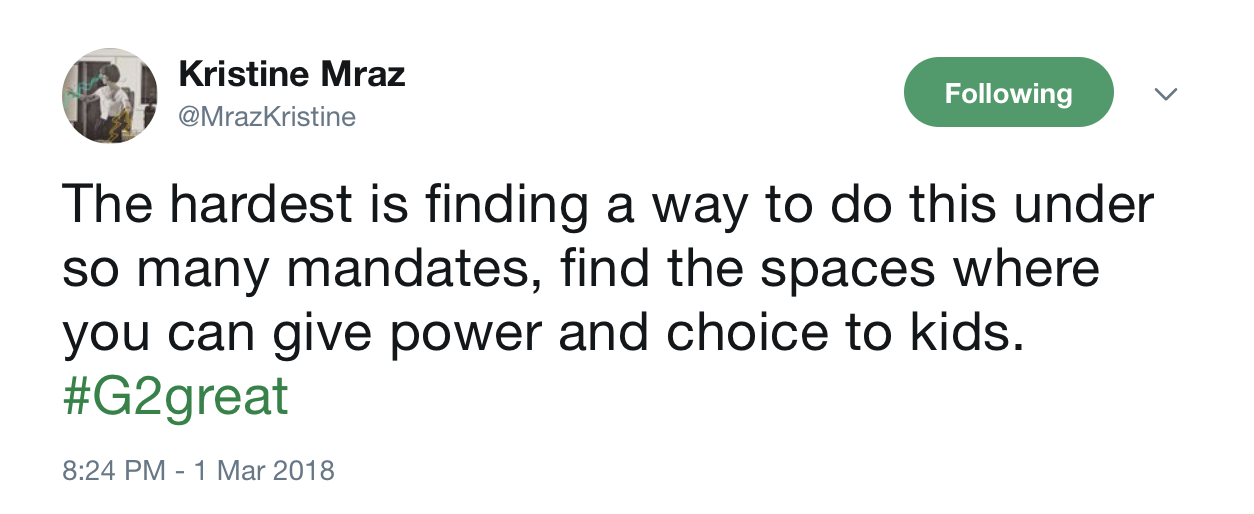
Kids 1st Big Idea #2: “Re-centering” Our Focal Point
Christine’s tweet beautifully segued from Kristi’s Big Idea 1. She continues this discussion by emphasizing where our first allegiance lives and asks us to make the same shift from a different angle. We are once again reminded to return that power to teachers and children by “re-centering” our decisions so that children rather than school elements remain at the center of our efforts. Her choice of wording that “children lead the way” highlights the idea that we become empowered when we make the very decisions that begin with our children. They are our standard, our curriculum and every other element of school you could possibly mention – not the other way around.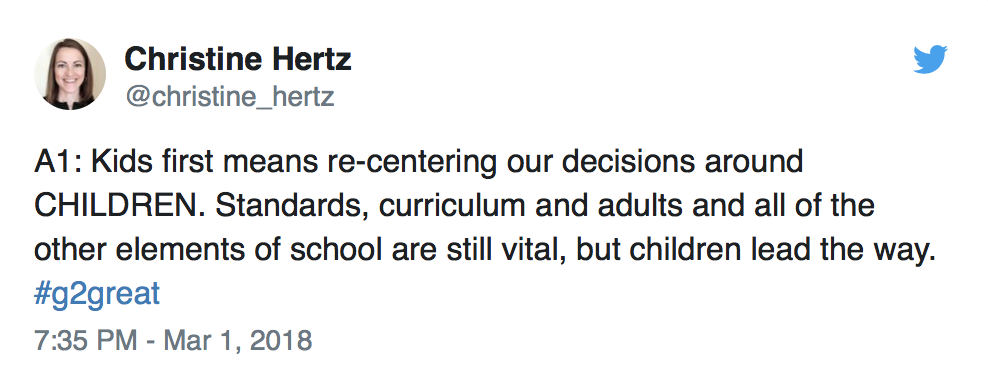
Kids 1st Big Idea #3: Relinquishing Instructional Control
The memory of Kristi reflecting on the child who tore her management chart from the wall amid cheering peers is likely to stay with me for a long time (admittedly, I silently cheered from the sidelines). This Kids 1st illustration from a child’s perspective at its finest illustrates that we do our children a disservice when instructional control is at helm. Kristi asks us to replace control with a renewed emphasis on instructional experiences. We can only be responsive and intentional when we offer faded support that is designed to promote increasing independence. We know that we must ensure that our children will assume their rightful place at the helm and this means that we have the courage to step aside so that they can man their own learning ship.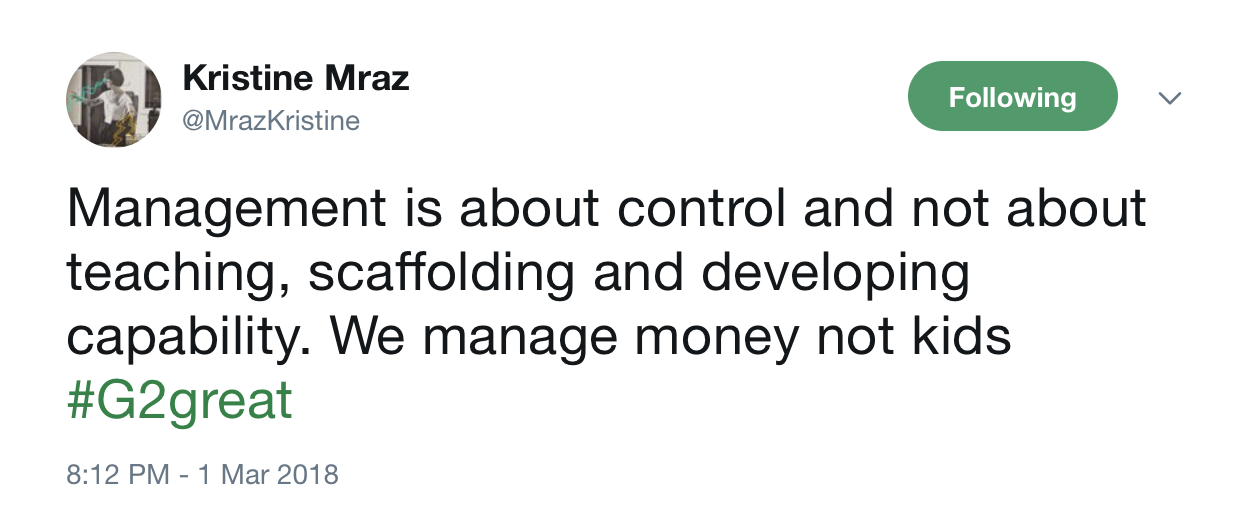
Kids 1st Big Idea #4: Embracing Our IMPACT
Christine helps us to broaden our Kids 1st scope by moving from a now to next view. This wider lens allows us to look to the future as we make our teaching focus about “life” rather than school. While it is certainly our responsibility to have an impact on our children for whatever time we are blessed to them in our care, a Kids 1st perspective always seeks a higher purpose that will live beyond this time so that our impact will linger long after they leave our care. The only way that we can have a classroom that (mostly) hums with collaboration and camaraderie is if we are willing to increase agency and thus give students ownership of learning.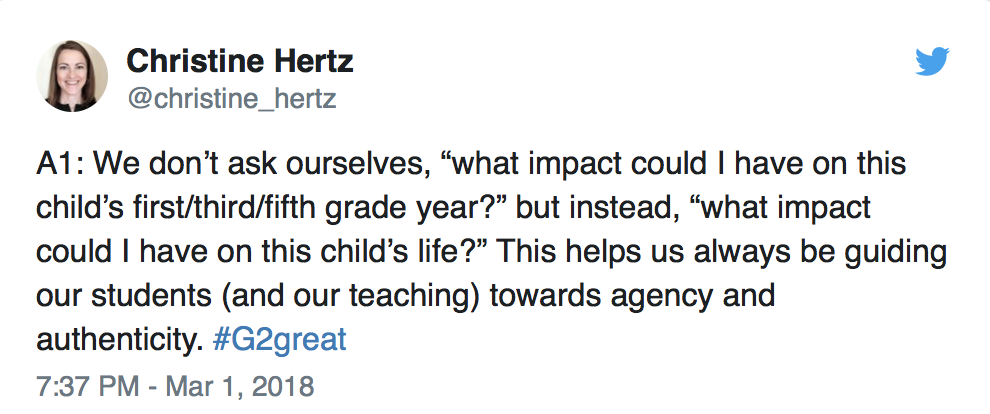
Kids 1st Big Idea #5: The Gift of Authenticity
When I think back on the five qualities teachers bring to the Kid’s 1st table, authenticity always looms large since it seems to me to be the glue that holds each of those qualities together. By bringing our true and most authentic selves to the experience each tine we are in the company of kids and fellow teachers, those qualities will almost always follow. Kristi wisely reminds us that the ME we purport to be and the ME we demonstrate by virtue of our actions in their company must be one in the same. Authenticity is a tap on the shoulder that we believe we owe it to children to be our best selves – for us and for them. That makes teaching joyful, rewarding, and meaningful.
Kids 1st Big Idea #6: Giving Children Ownership
I smiled when I read Christine’s beautiful line from Lion King, “Everything the light touches is our kingdom.” I love this vision of classrooms as our kingdom and the idea that everything in our learning kingdom belongs to our children. No matter how beautifully designed our learning spaces may be or how many things we bring into those spaces, they will have little value unless children interact with them in purposeful ways. Christine reminds us to turn the keys of the kingdom over to our children so that everything in it can become a force of good. It is only when our learning space grows with children that we can create those spaces so that they begin with a “blank canvas, not a finished masterpiece.”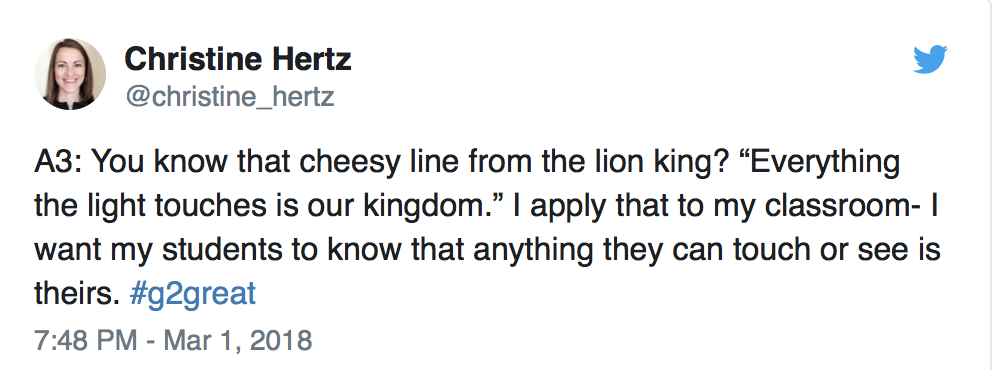
Kids 1st Big Idea #7: Design from a Child’s Eyes
Room design has gained renewed educational interest as teachers scramble to enthusiastically change each aspect of room design. Unfortunately, these designs far too often hyper focuses on the design itself over how that design becomes a mirror that reflects the unique needs of the children who reside in those spaces. Kristi reminds us that a Kids 1st design must carefully match that learning needs of our children. For this reason, our learning design will rise from their specific learning needs and this will always varies according to the children within those spaces. We can only do this if those decisions are guided by our design for the flexibility to be spontaneous in how the classroom is arranged… and that includes children by design.
Kids 1st Big Idea #8: Cultivating and Modeling Empathy
In their book, Kristi and Christine define empathy as the “ability to see the world from another person’s perspective and to understand and feel what that person feels in the moment.” They further distinguish empathy as feeling like rather than for others. Christine shares what every Kids 1st teacher knows – that modeling empathy is not a point of arrival but rather is something that we foster in ourselves and others on a daily basis. I love Christine’s view of empathy as giving ourselves permission to joyfully see the world from a child’s perspective. What a lovely reminder that each of us can re-experience the world from a child’s eye view and appreciate that world all over again. This is a blessing in every sense.
Kids 1st Big Idea #9: Creating a Community of Learners
Kristi and Christine acknowledge that “building a productive, functional, joyful community of unique individuals” is not a simple endeavor by any means. In a Kids 1st classroom, we do not confuse classroom management with building community. We recognize our responsibility to help children become one of many and to develop the skills that will allow them to do so even within a myriad of unexpected events that we may not even be able to anticipate. This does not happen by chance but by intentional and explicit modeling as we support and extend these day to day experiences that will inevitably fill our classrooms with powerful learning opportunities.
Kids 1st Big Idea #10: The Flawed Myth of Perfection
Christine’s words bring to mind a vision of the ball and chain that seems to tether teachers everywhere to an unrealistic view in an elusive search for the “perfect teacher.” In Kids 1st, they remind us “Don’t hope for perfect, plan for growth” (ours and theirs). I chuckled at Christine’s idea to create a “letting go of perfection teacher support group” but that just might be an idea worth pondering. It seems to me that perfection is in our teacher DNA, and yet an unrelenting pursuit of perfection can blind us to the incredible learning opportunities that may be hiding just out of the perfection view. We can instead celebrate hard work that comes from wading joyfully in the mess and realize that we can emerge unscathed and better for the experience. My best learning has always come from my less than stellar teaching trials and tribulations. Let’s not avoid them – let’s celebrate them!
As I look back at this exquisite book and the #G2Great tweets that Kristi and Christine have written in honor of kids and teachers everywhere, I am inspired anew. They share their hope that in writing this book their words may have “tugged on a thread that caught your heart and mind…” and I can wholeheartedly say ‘Mission accomplished!’ Kristi and Christine have challenged us to renew our own vision for what is possible as we re-envision our teaching using a Kids 1st perspective. It is my deepest hope that every educator will accept their challenge to bring their Kids 1st vision to life in honor of incredible children who deserve our best everywhere.
Thank you for showing us what heart work looks like Kristi and Christine!
LINKS
Kids 1st from Day 1: A Teacher’s Guide to Today’s Classroom by Kristi Mraz and Christine Hertz (Heinemann 2018)
https://www.heinemann.com/products/e09250.aspx
A Mindset for Learning: Teaching the Traits of Joyful Independent Growth
https://www.heinemann.com/products/e06288.aspx
Anchor Yourself In Your Beliefs by Kristi Mraz and Christine Hertz
Facebook Live Q+A: https://blog.heinemann.com/facebook-live-kids-first-from-day-one
KIds First From Day One Podcast:
https://blog.heinemann.com/kids-first-from-day-one-podcast
Is Community Building the New Classroom Management? https://blog.heinemann.com/comunity-building-new-behavior-management
“But What if No One Listens To Me!?!” https://medium.com/@heinemann/but-what-if-no-one-listens-to-me-c83ce50859ef
Kristi and Christine FB Group for Mindset for Learning and Kids First:
https://www.facebook.com/groups/MindsetforLearning/
Christine Hertz’ Blog
https://www.christinehertz.com
(Don’t miss) Tacking Tricky Moments: Four Steps to Being a More Empathetic Teacher
Kristi Mraz’ Blog
https://kinderconfidential.wordpress.com/about/


